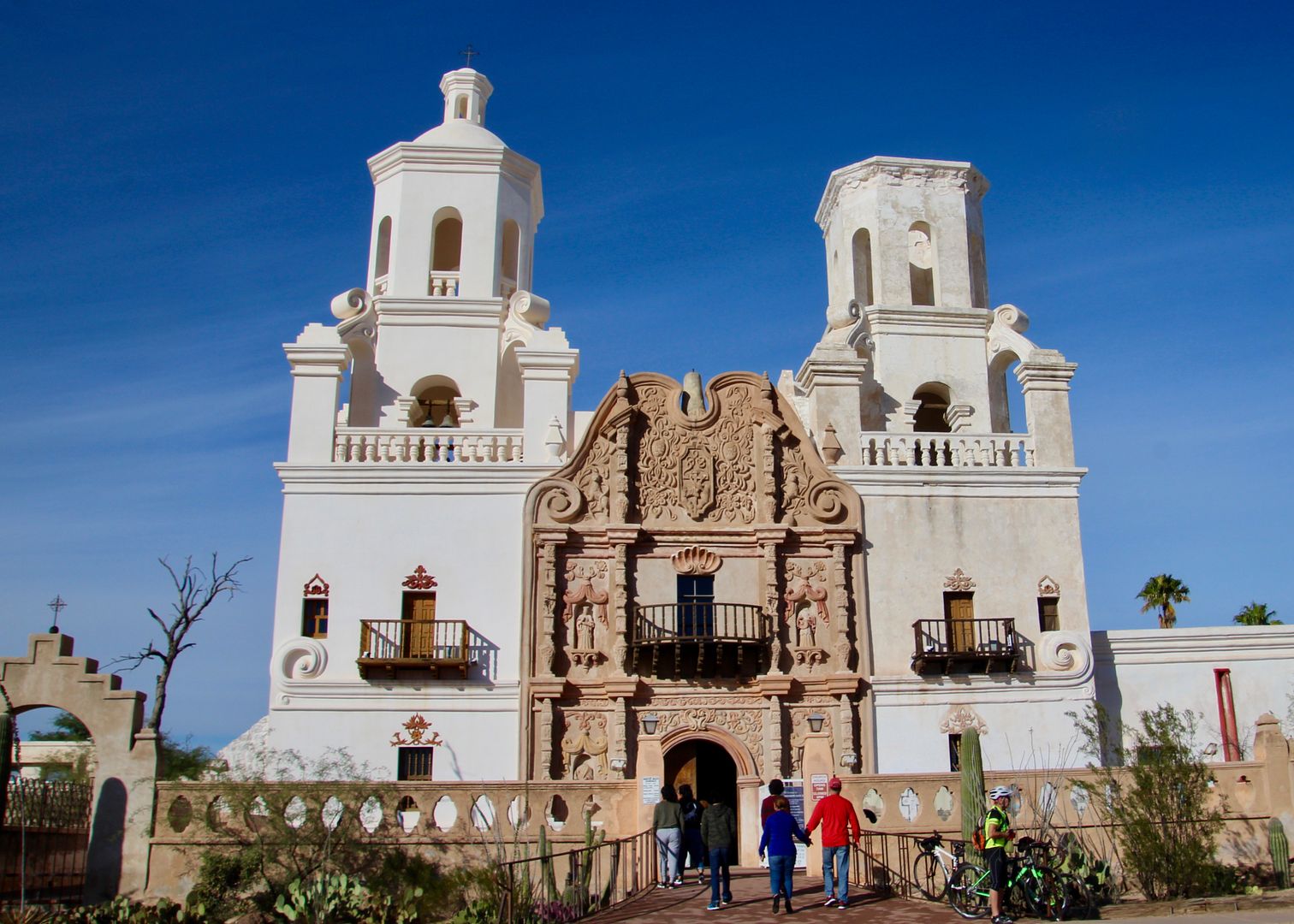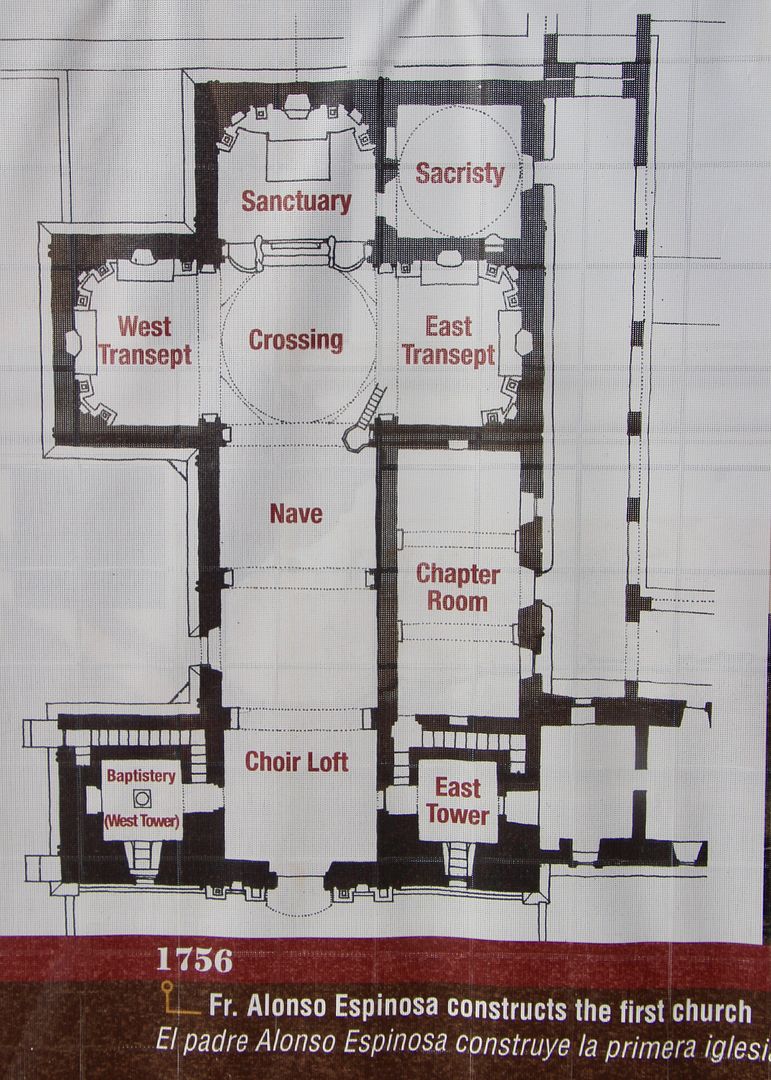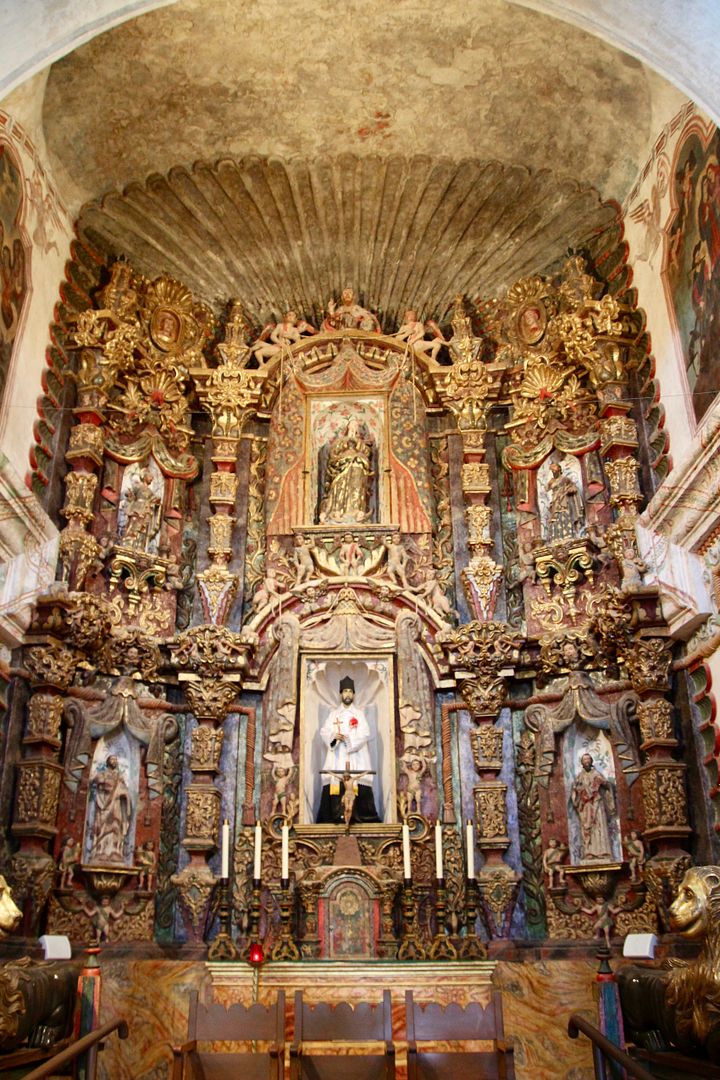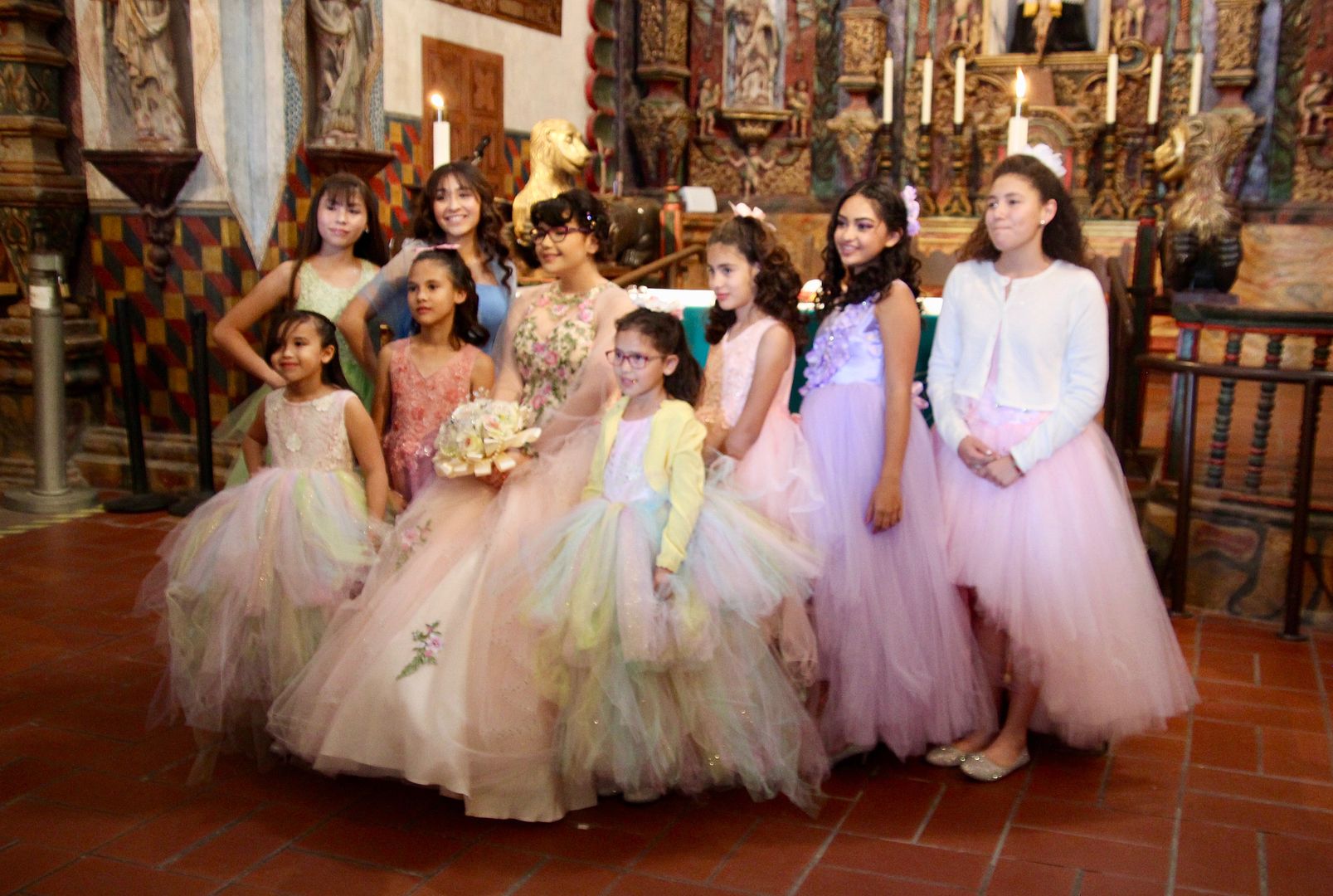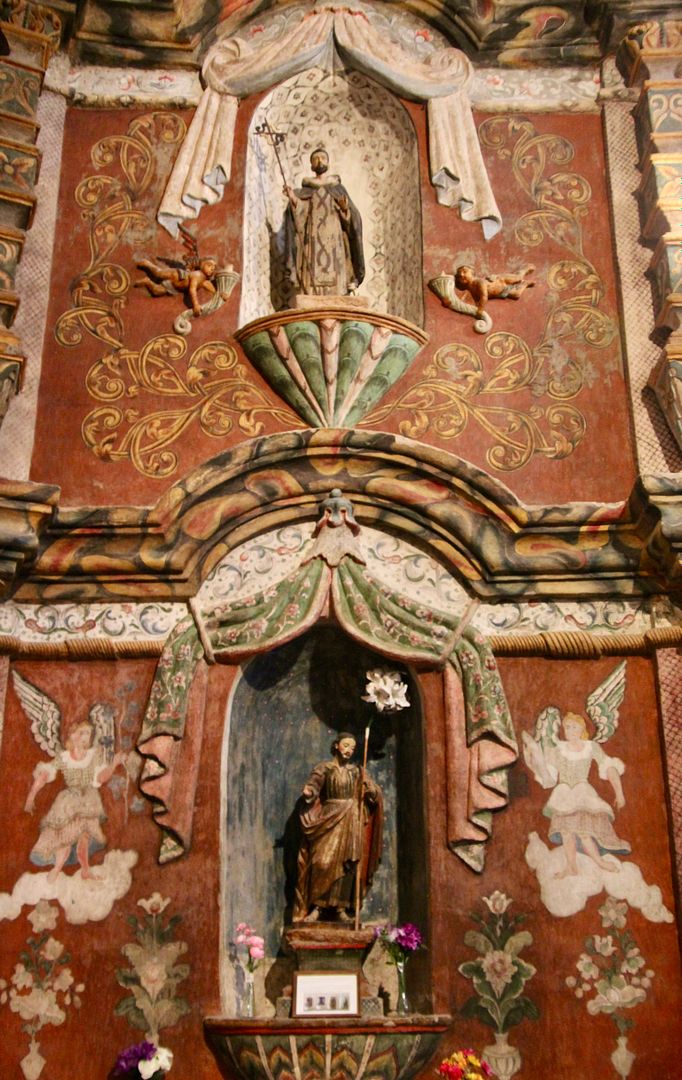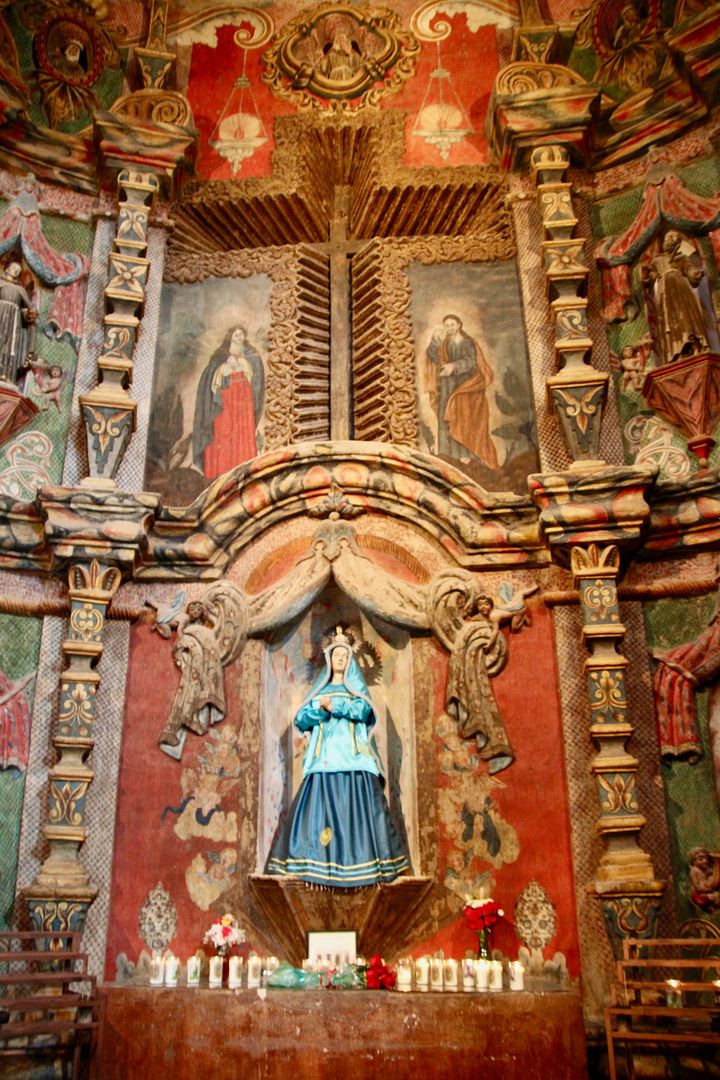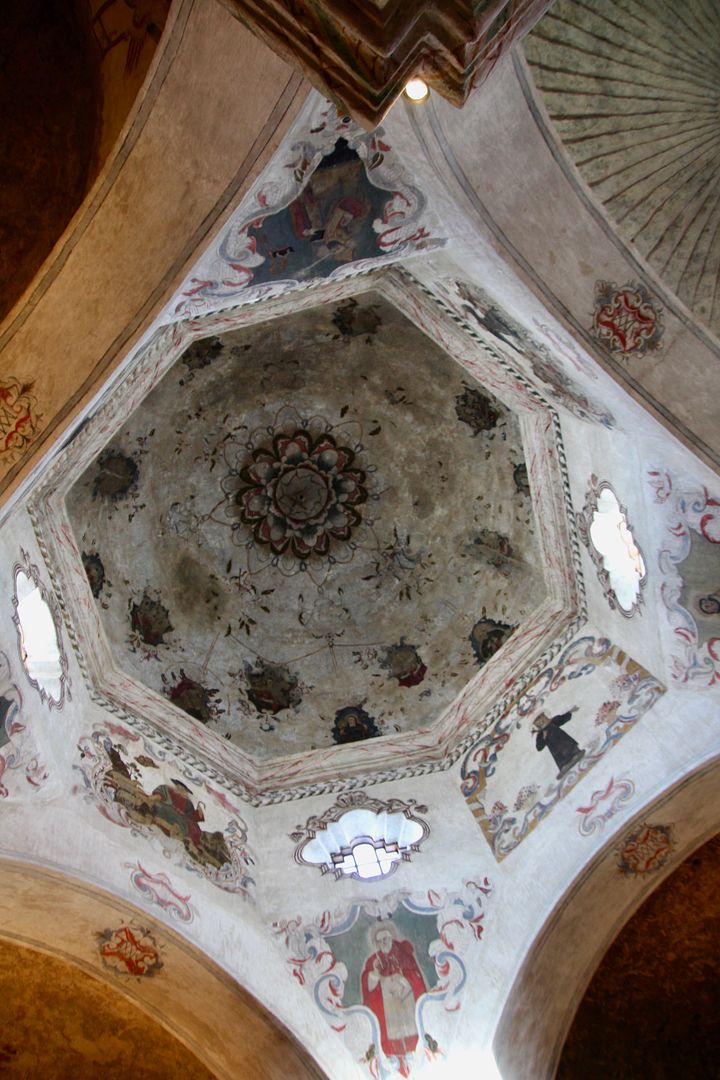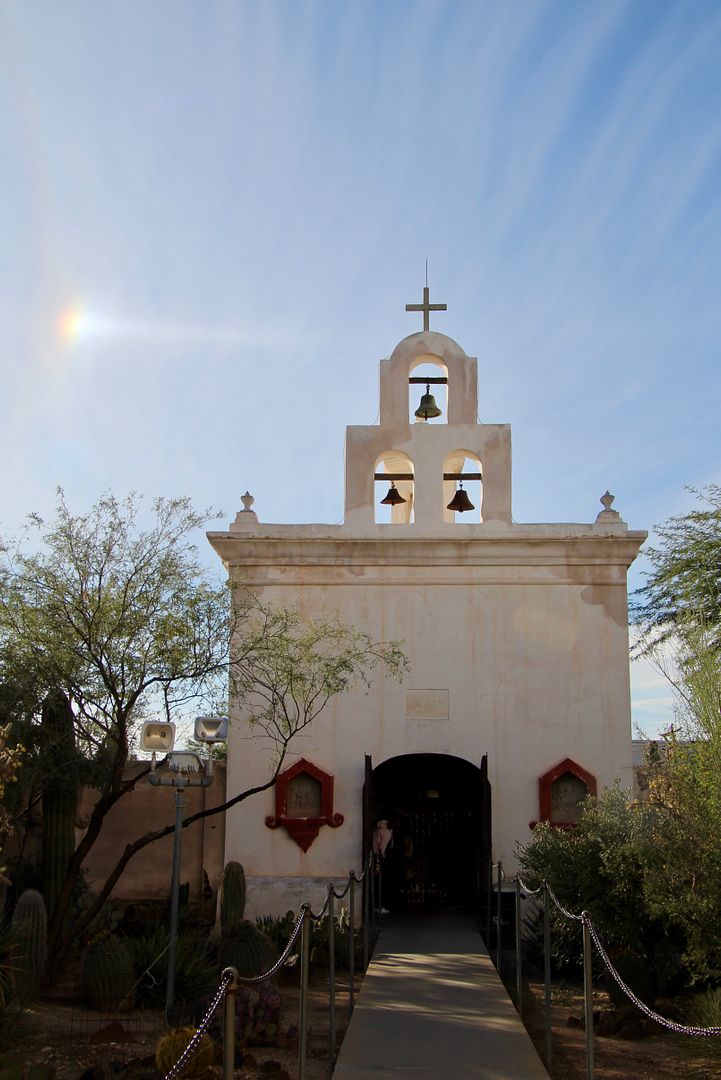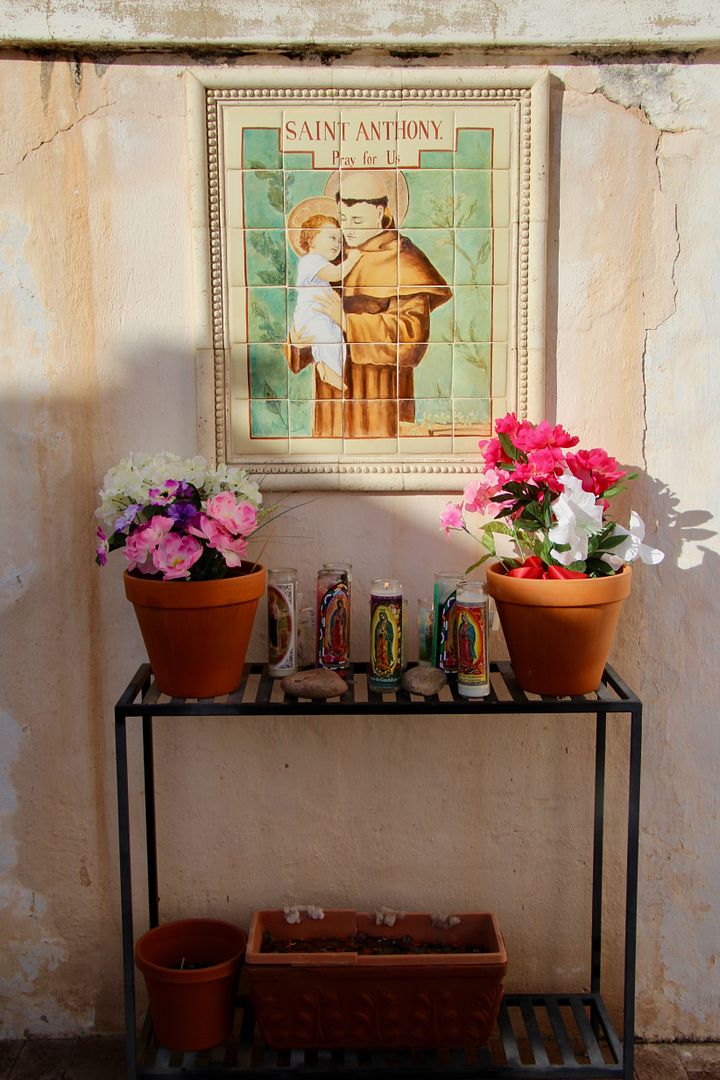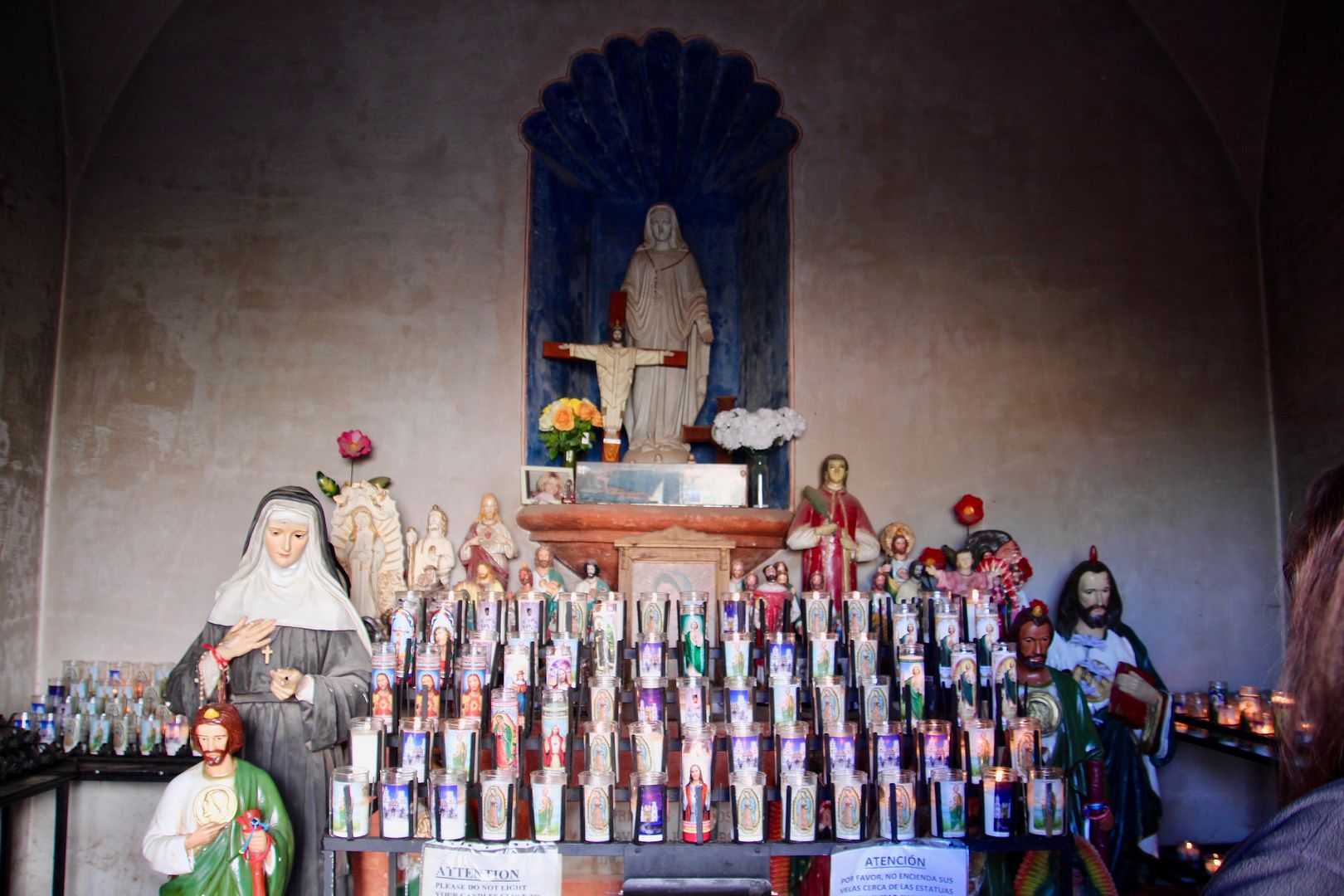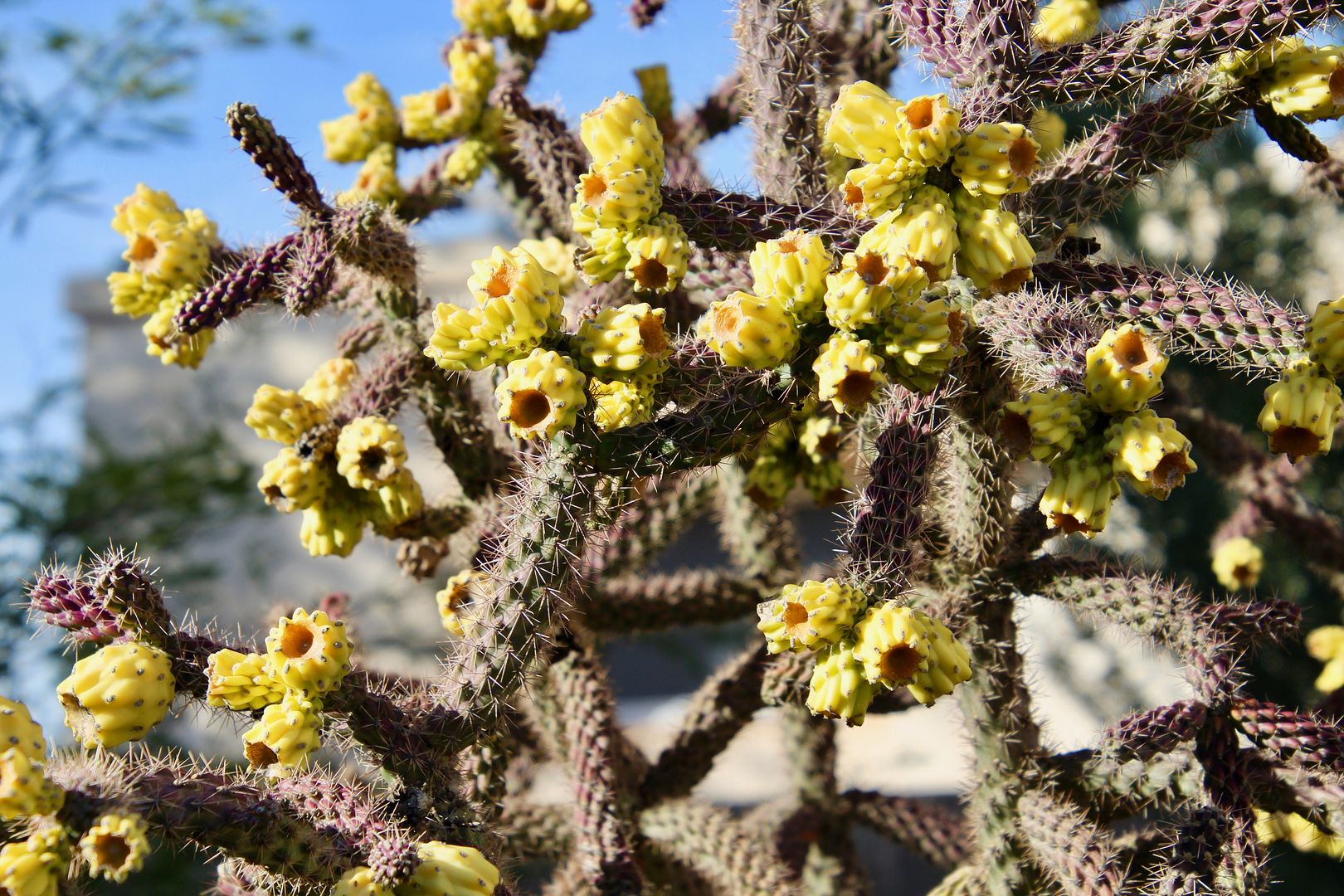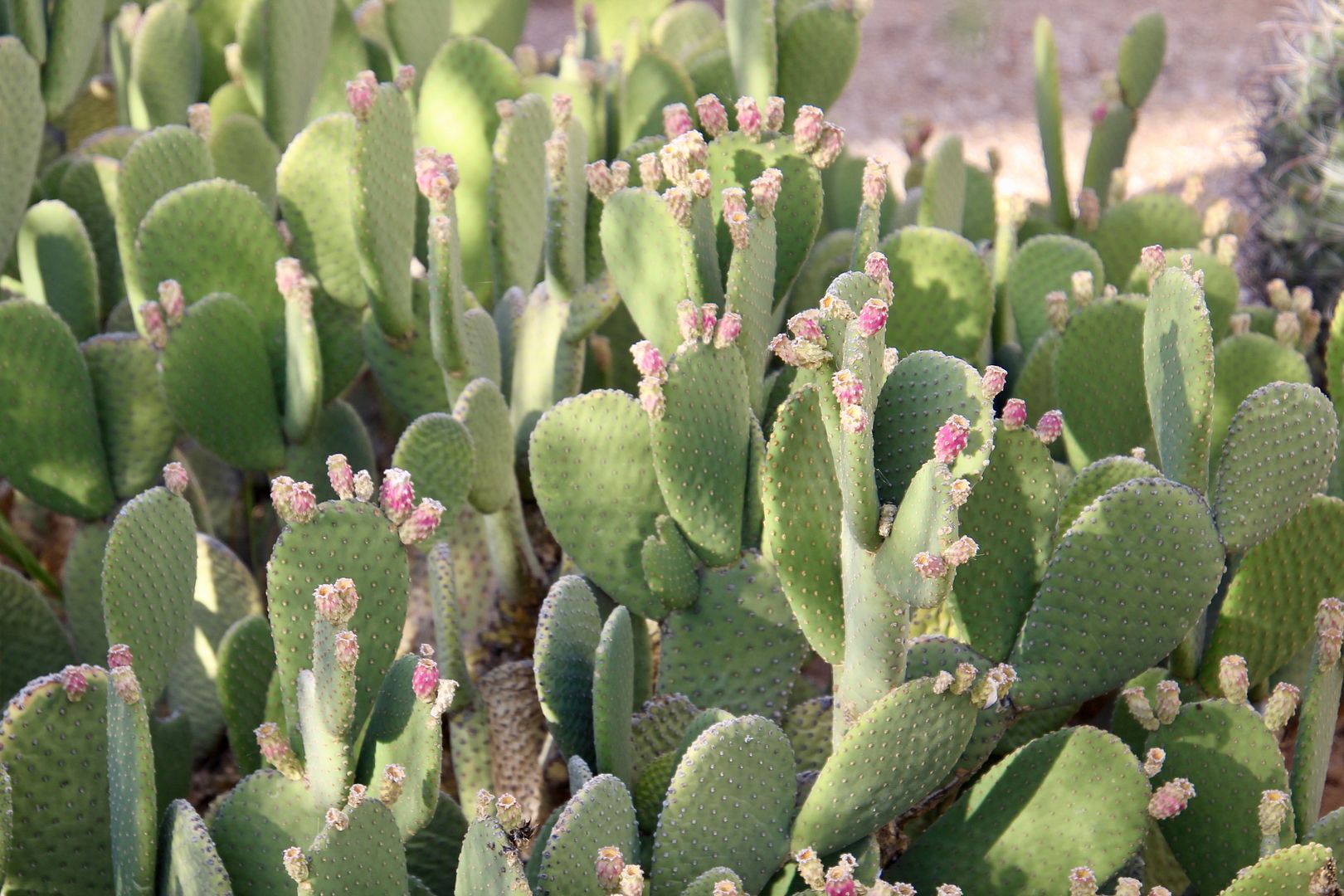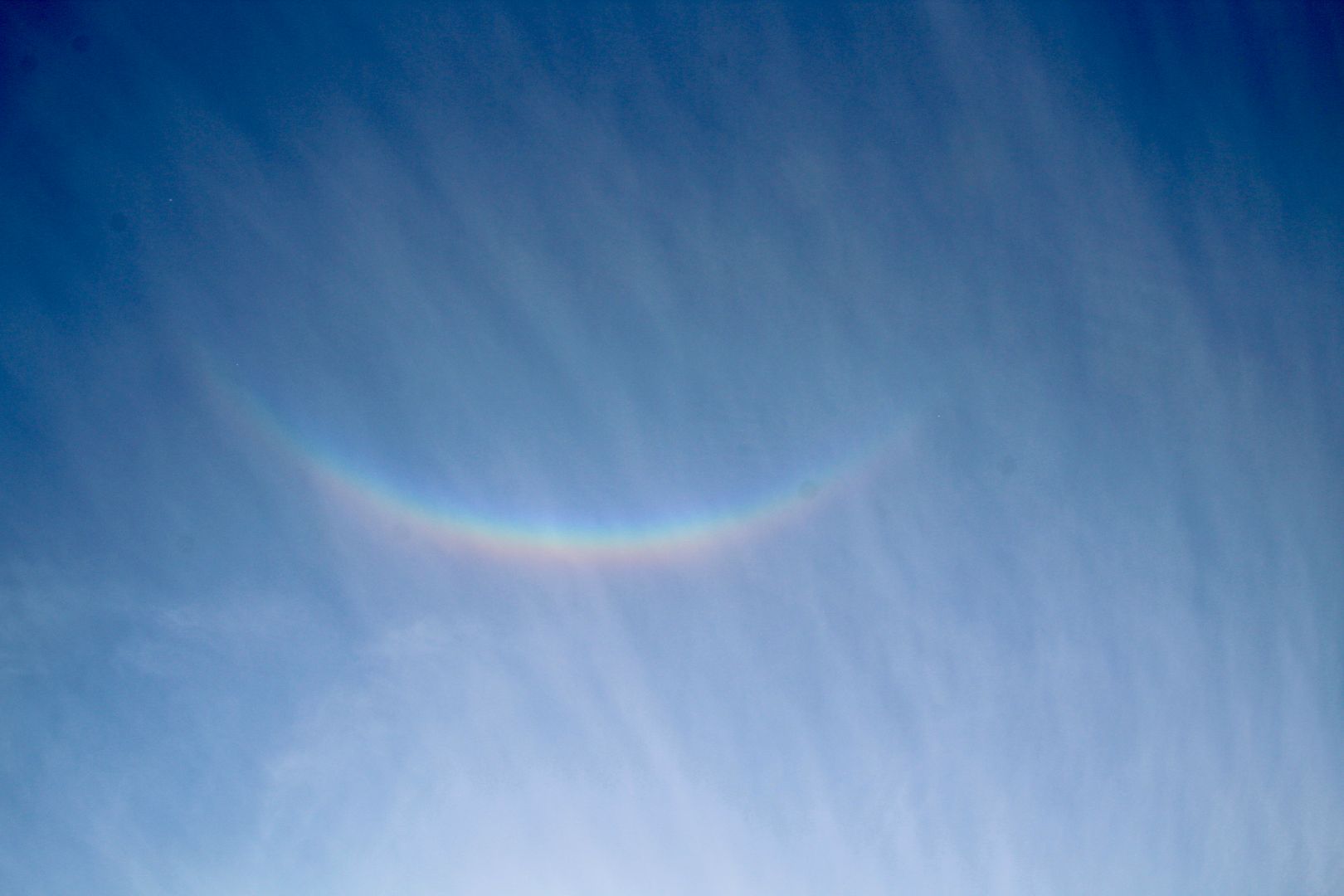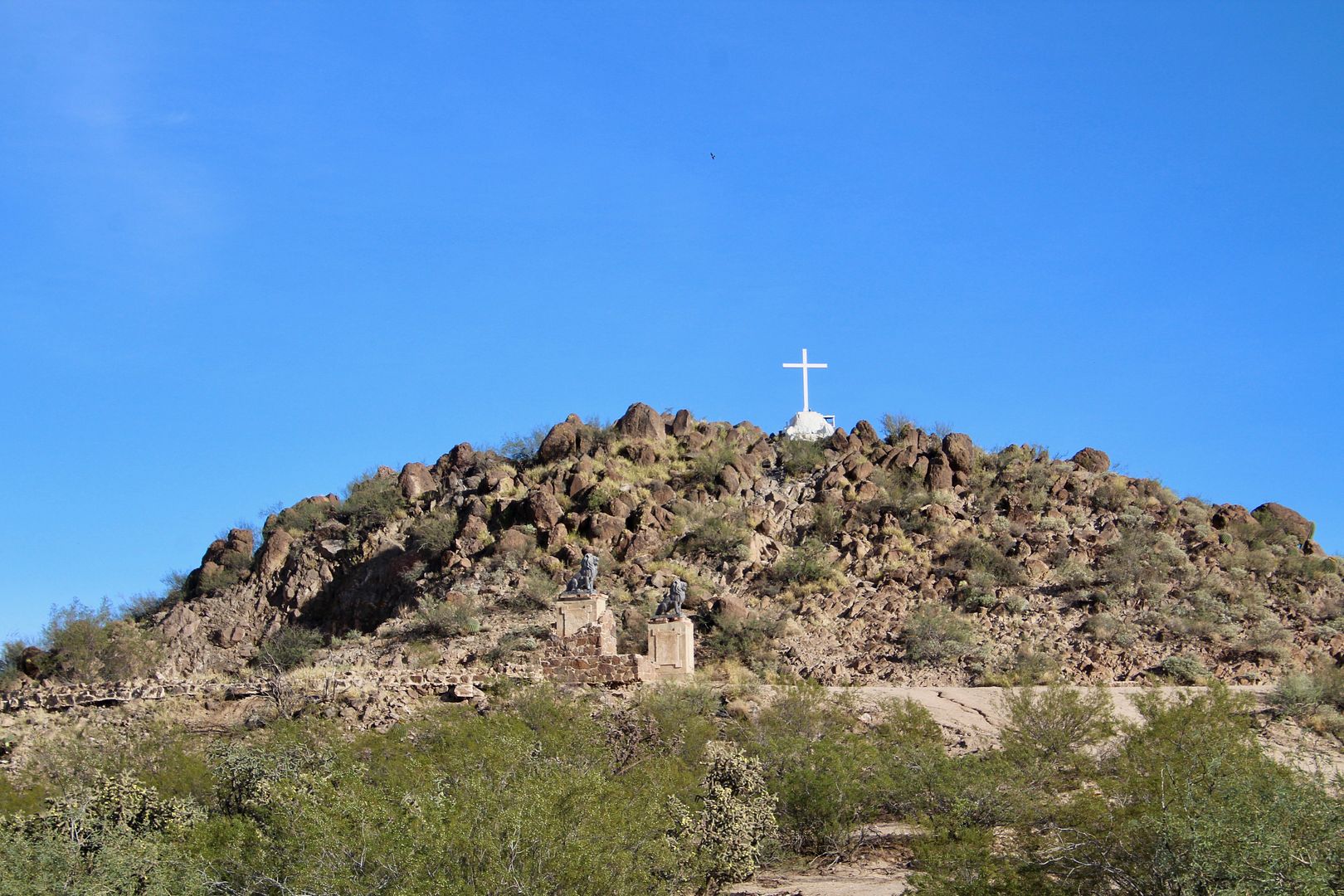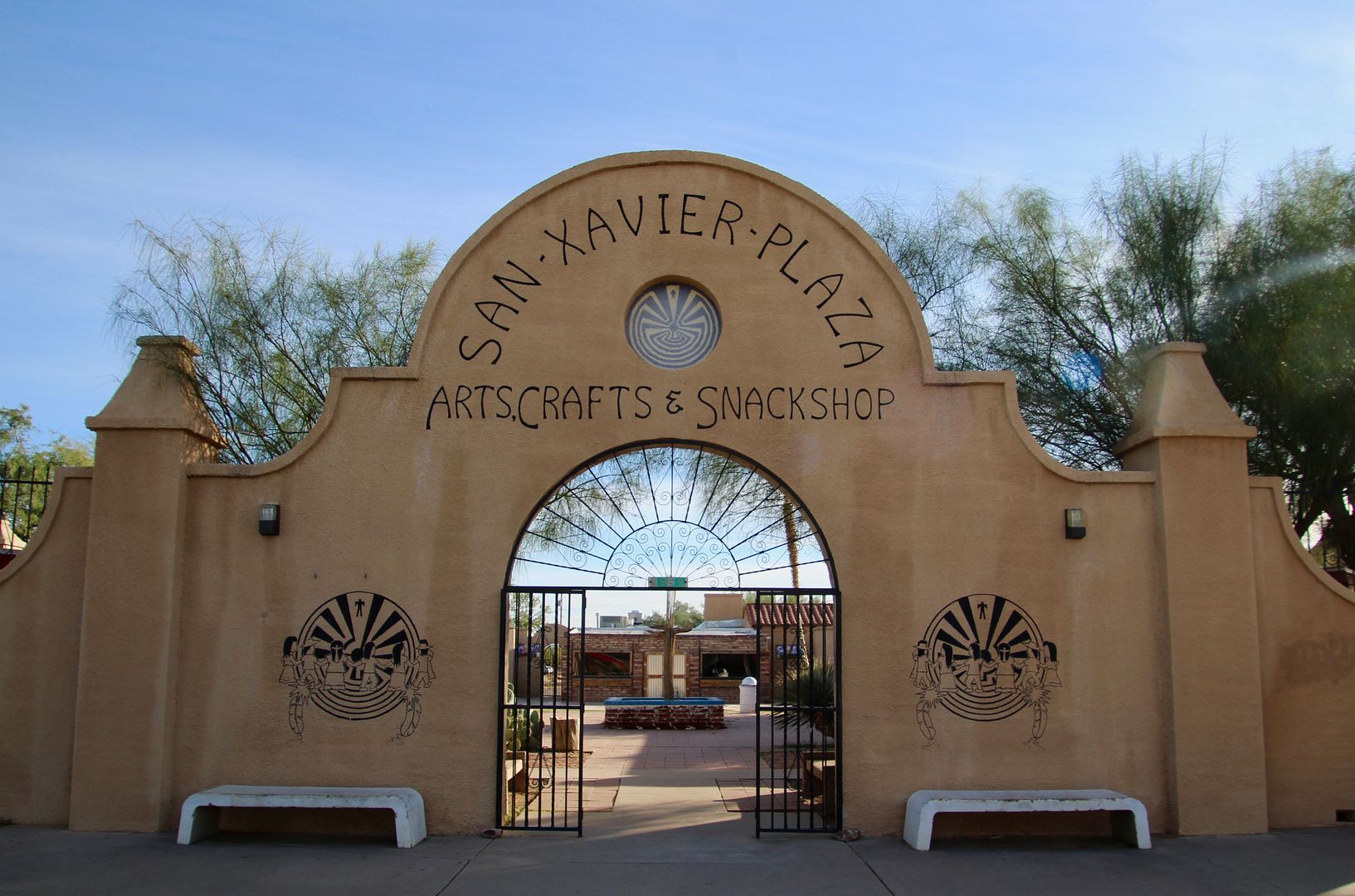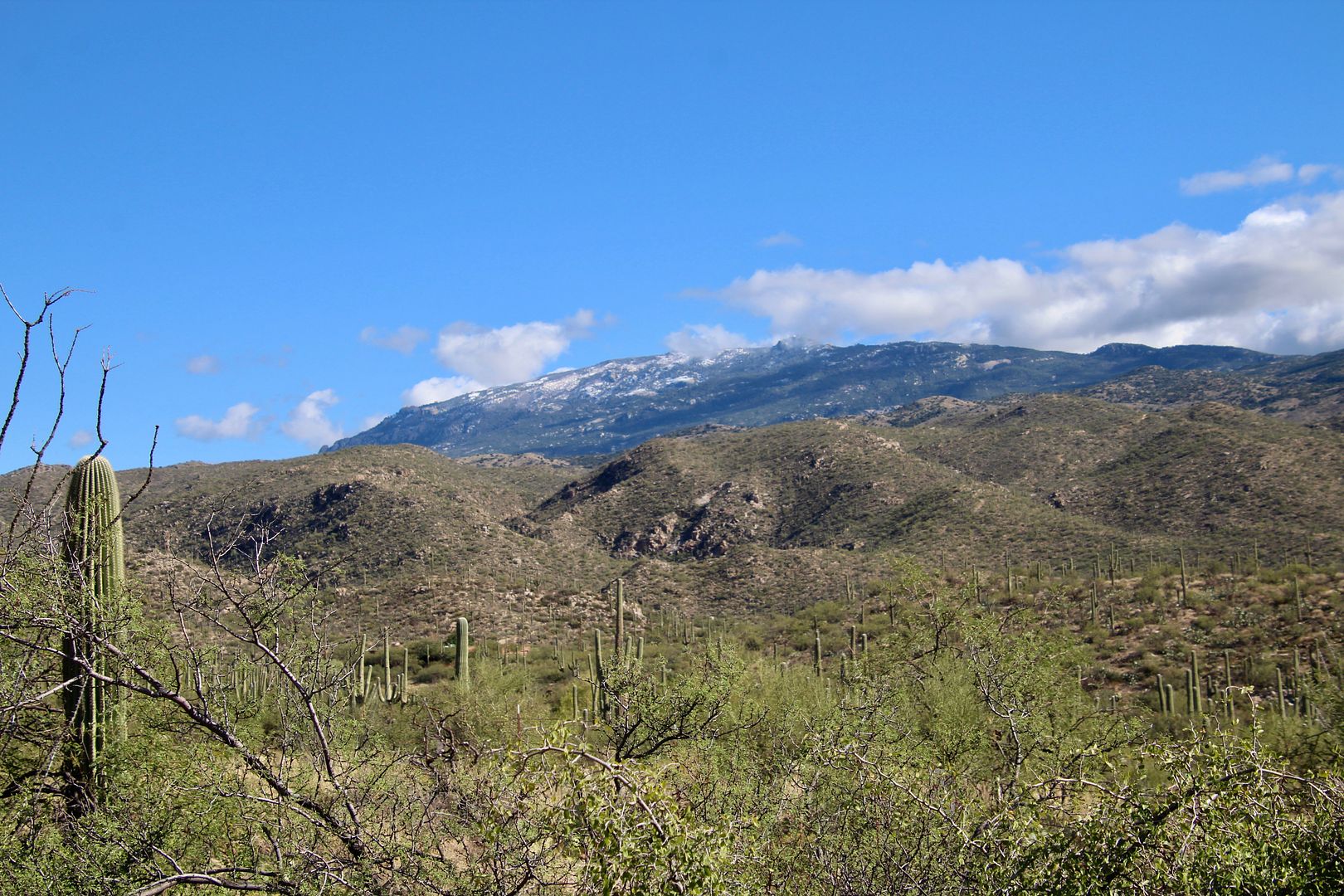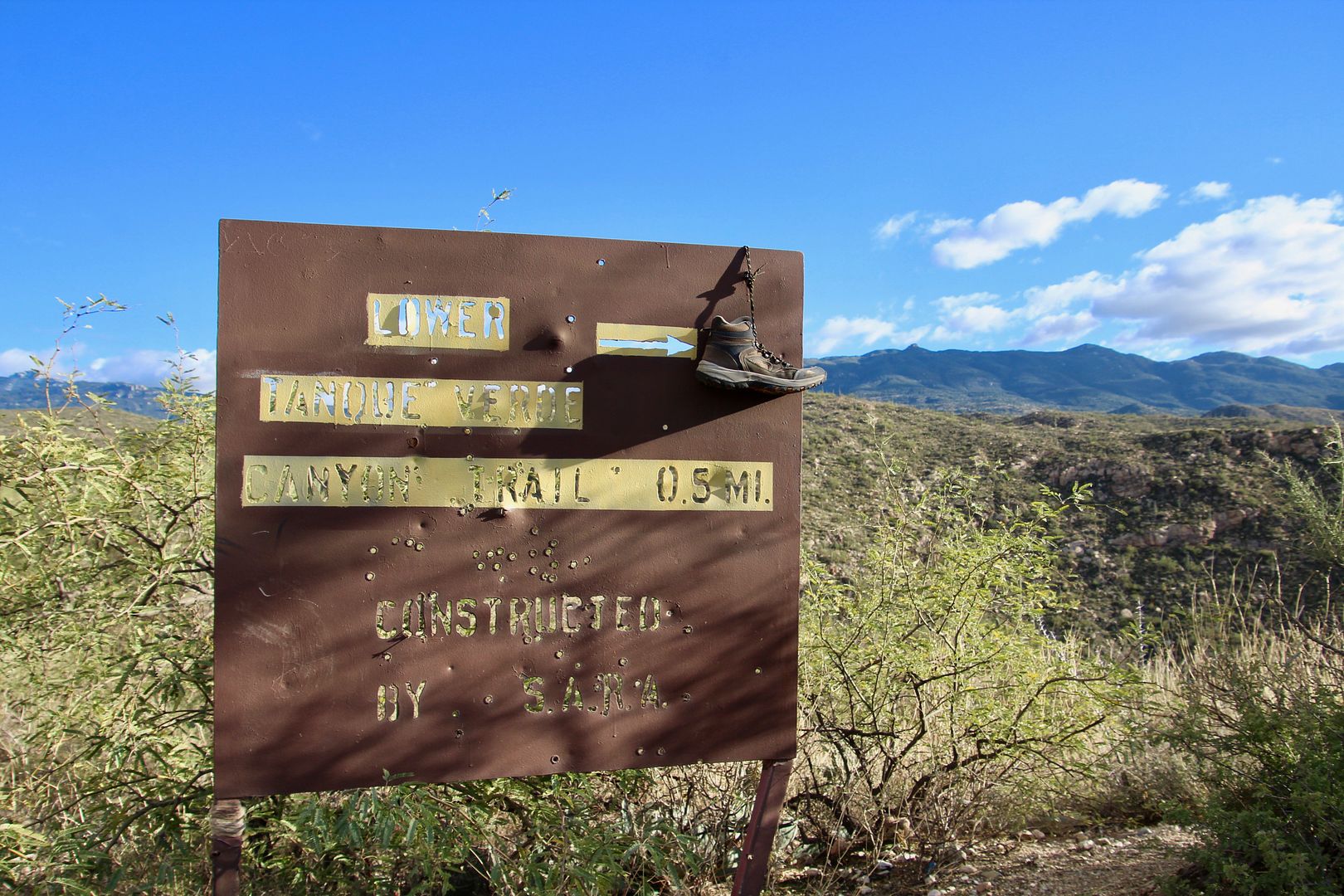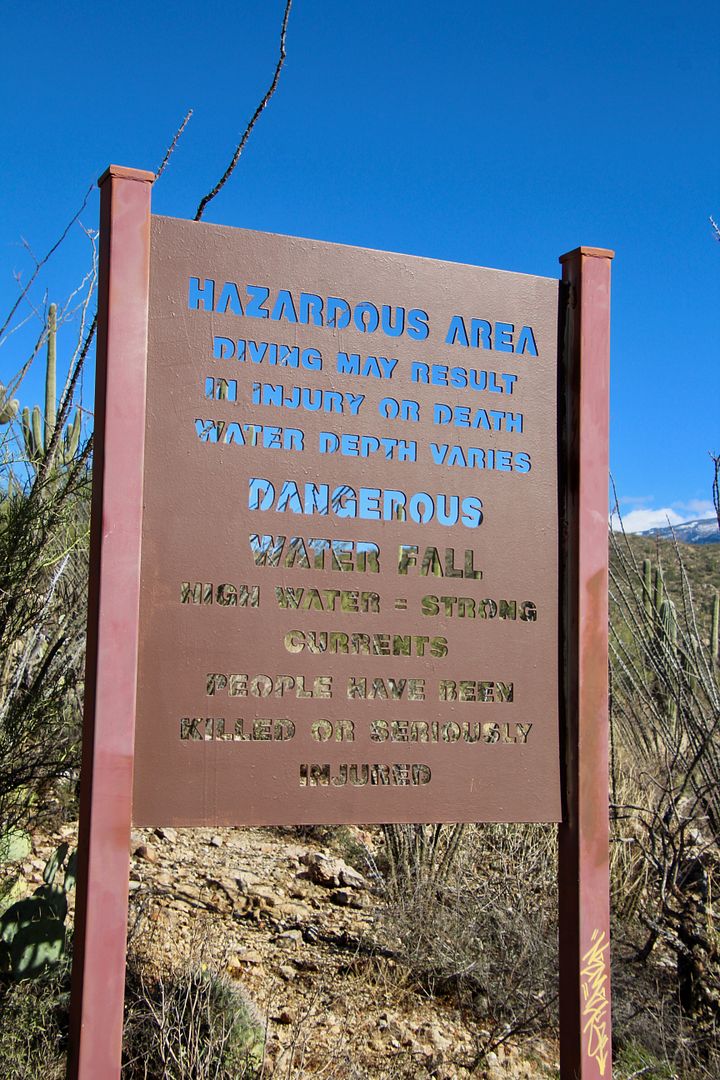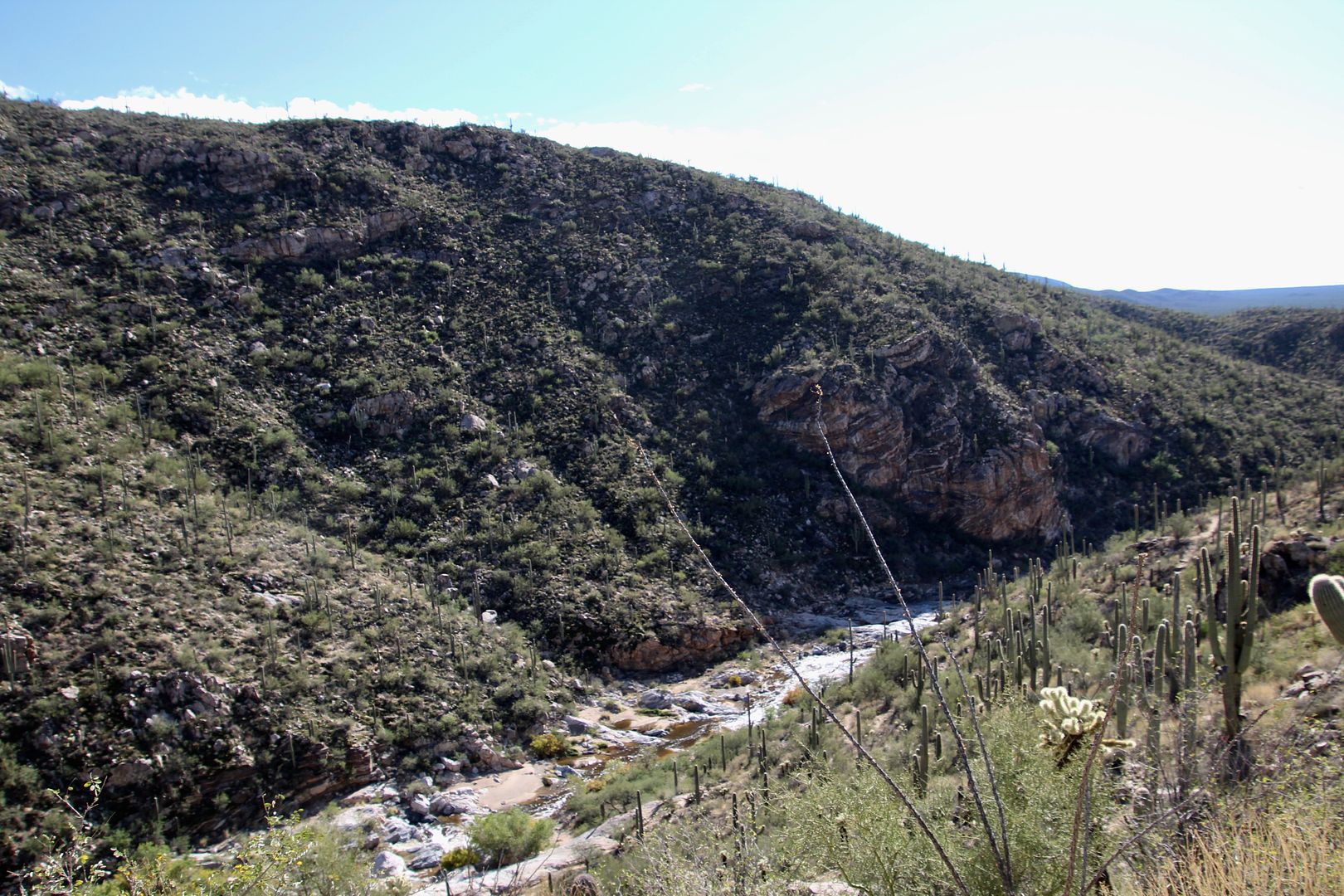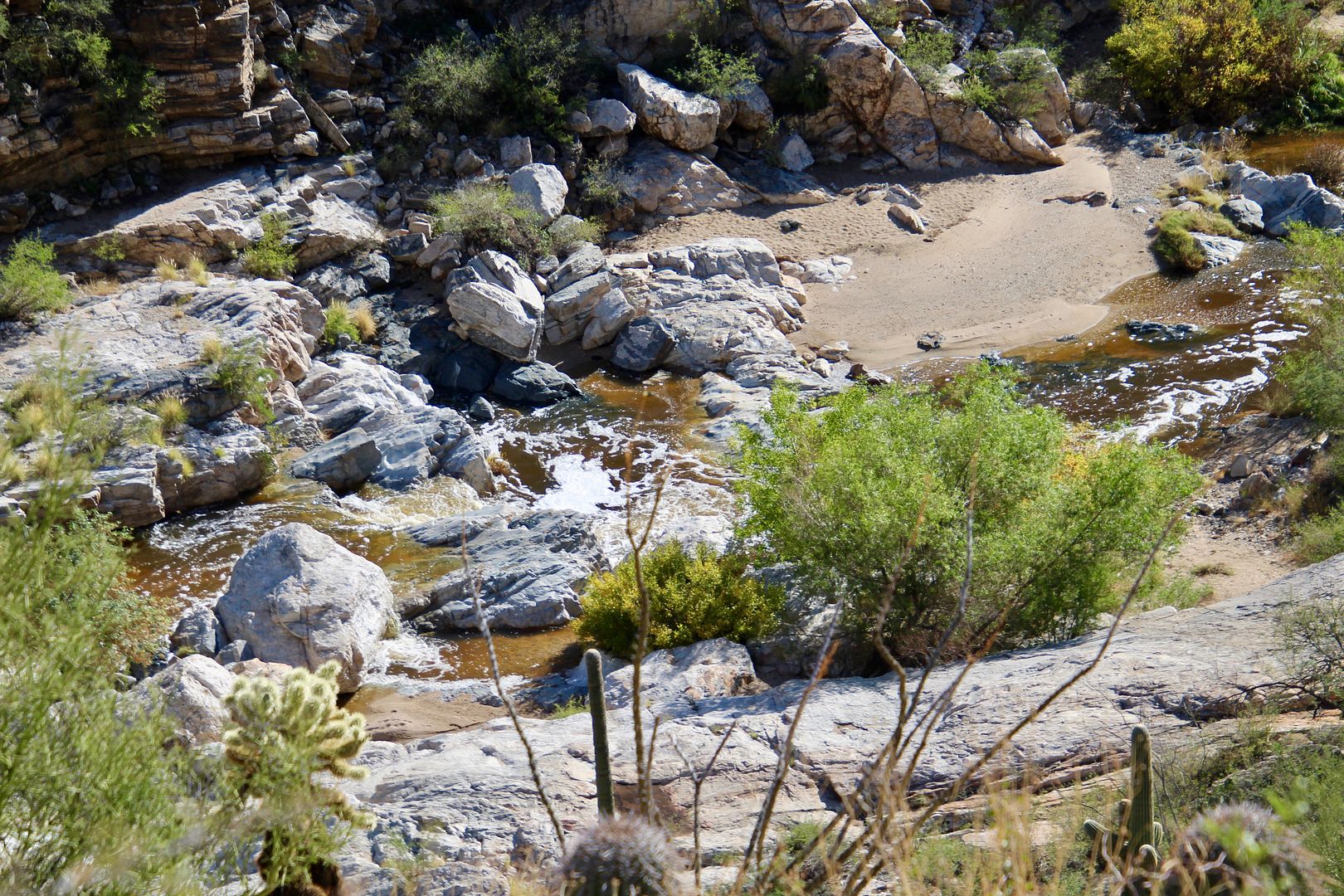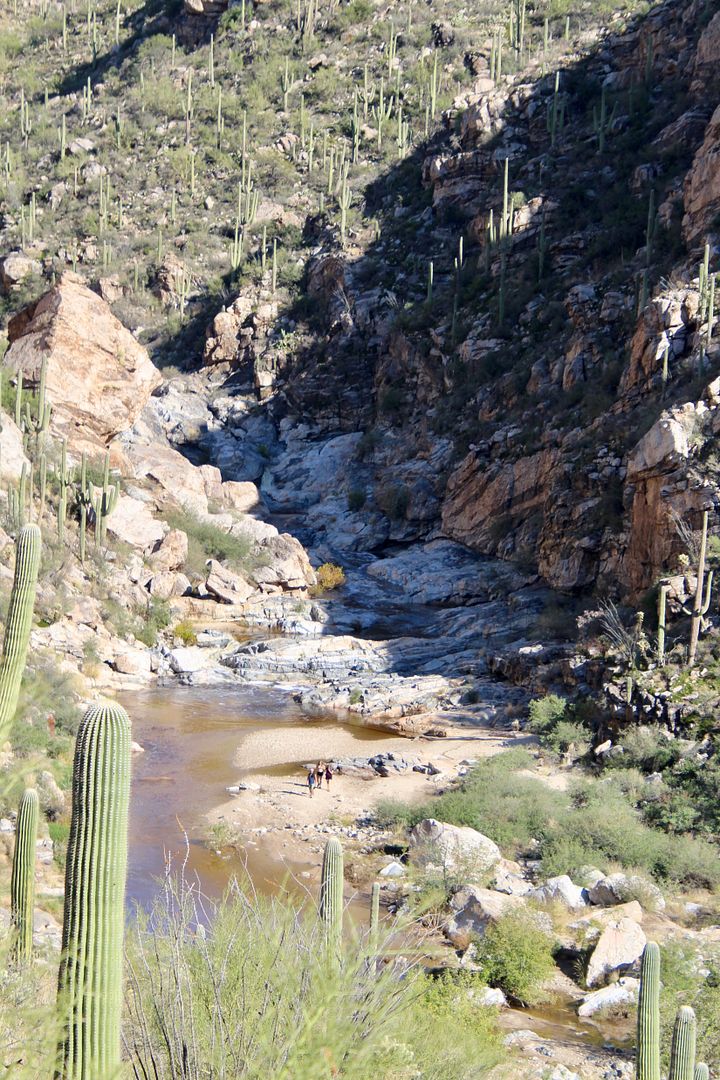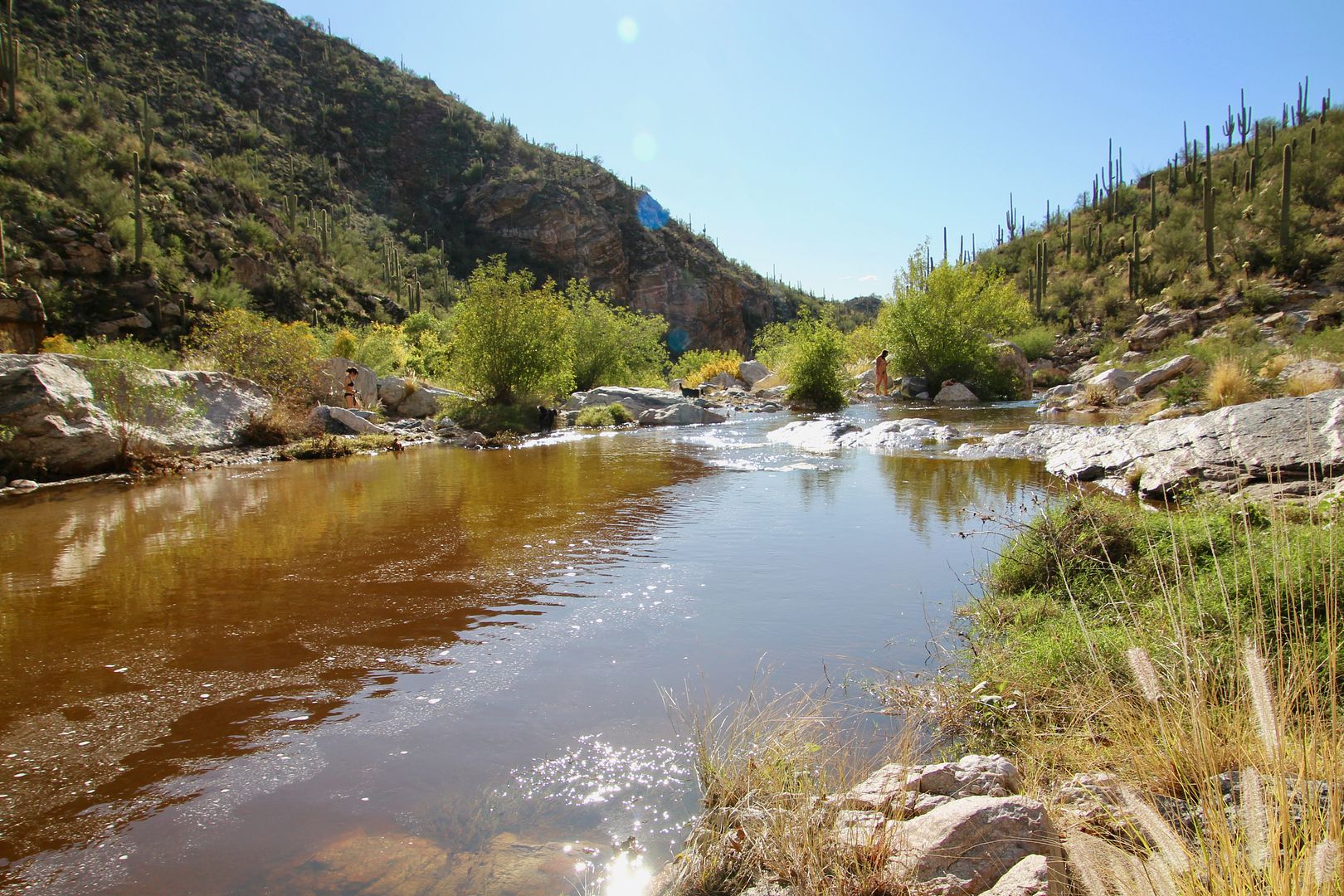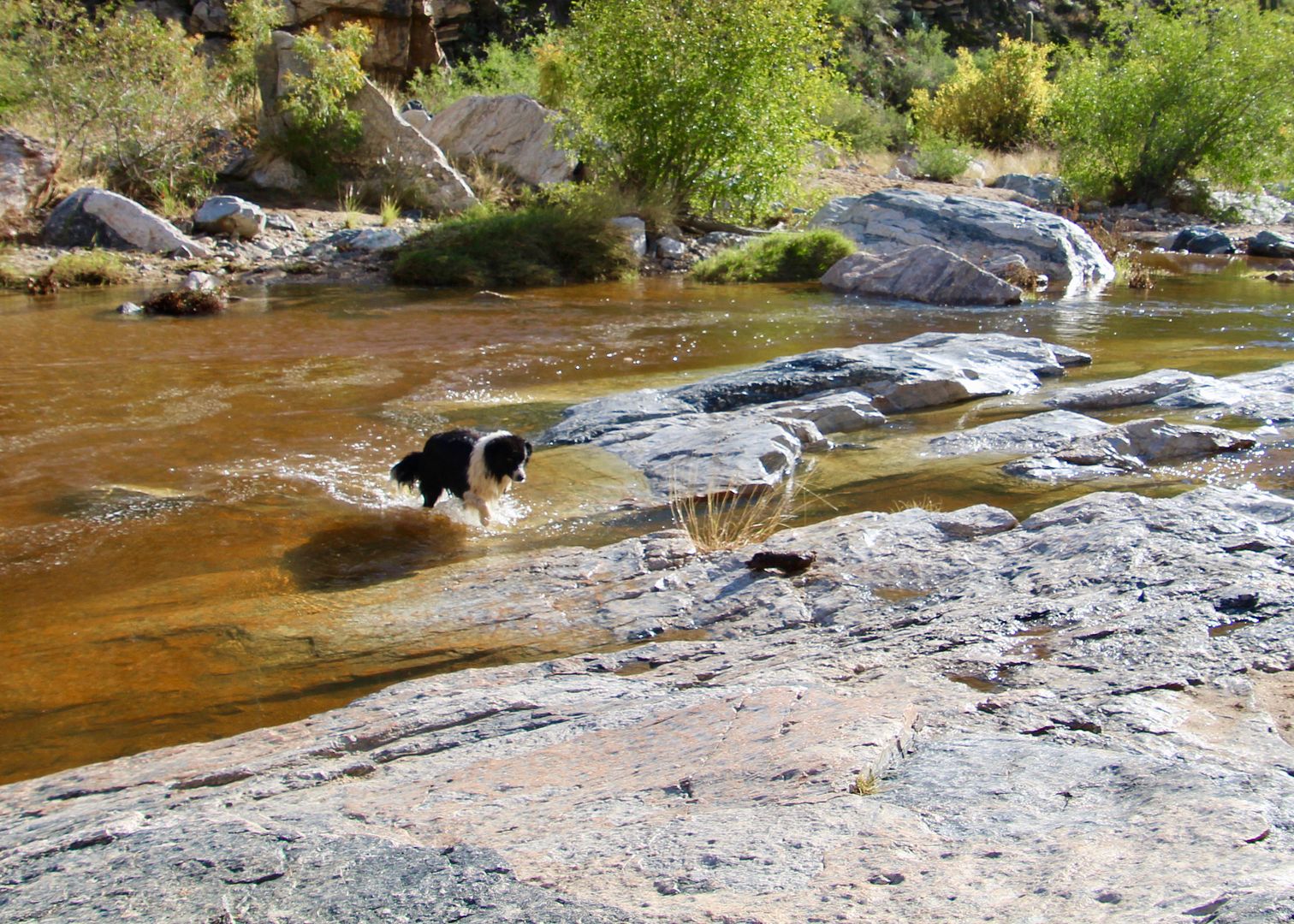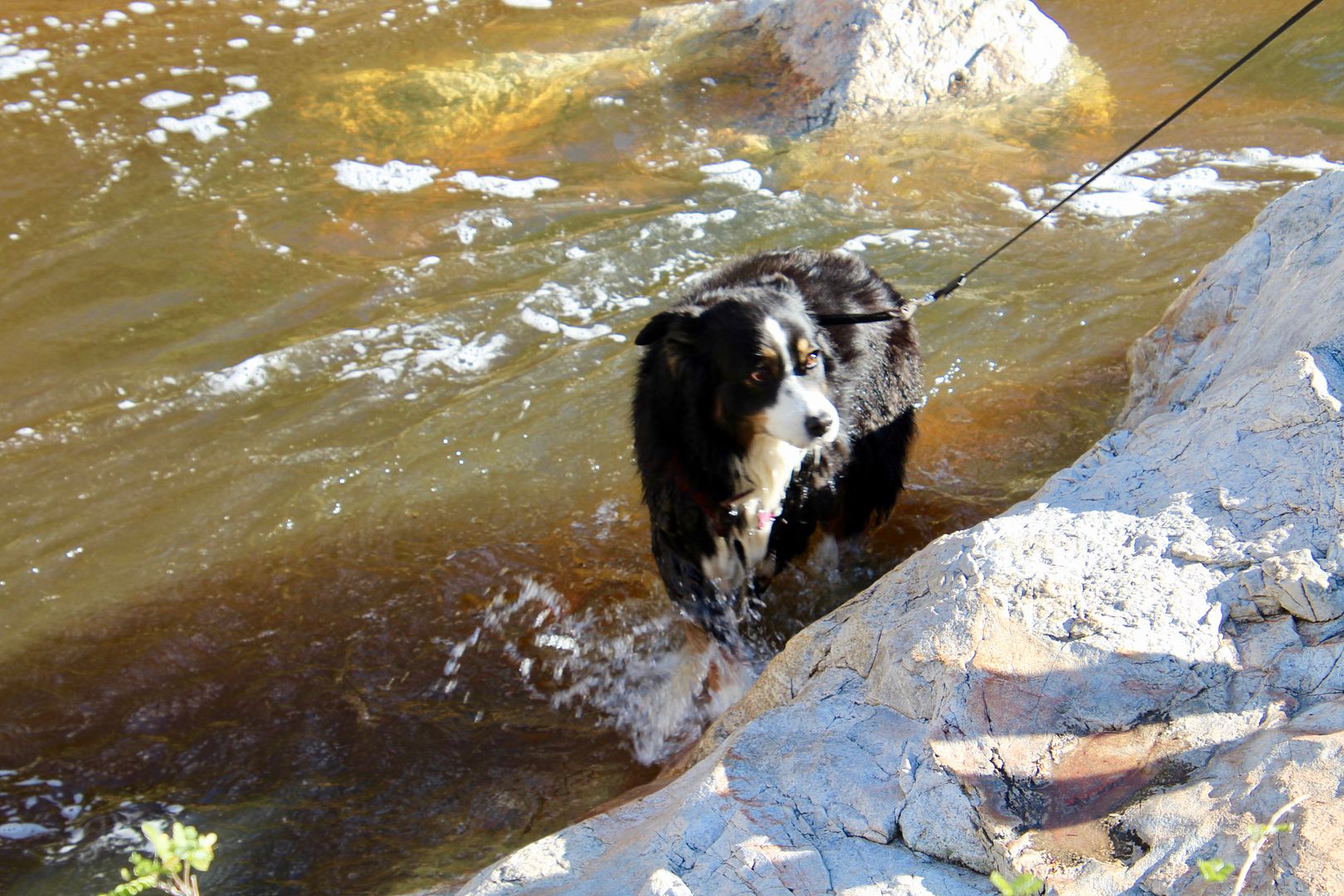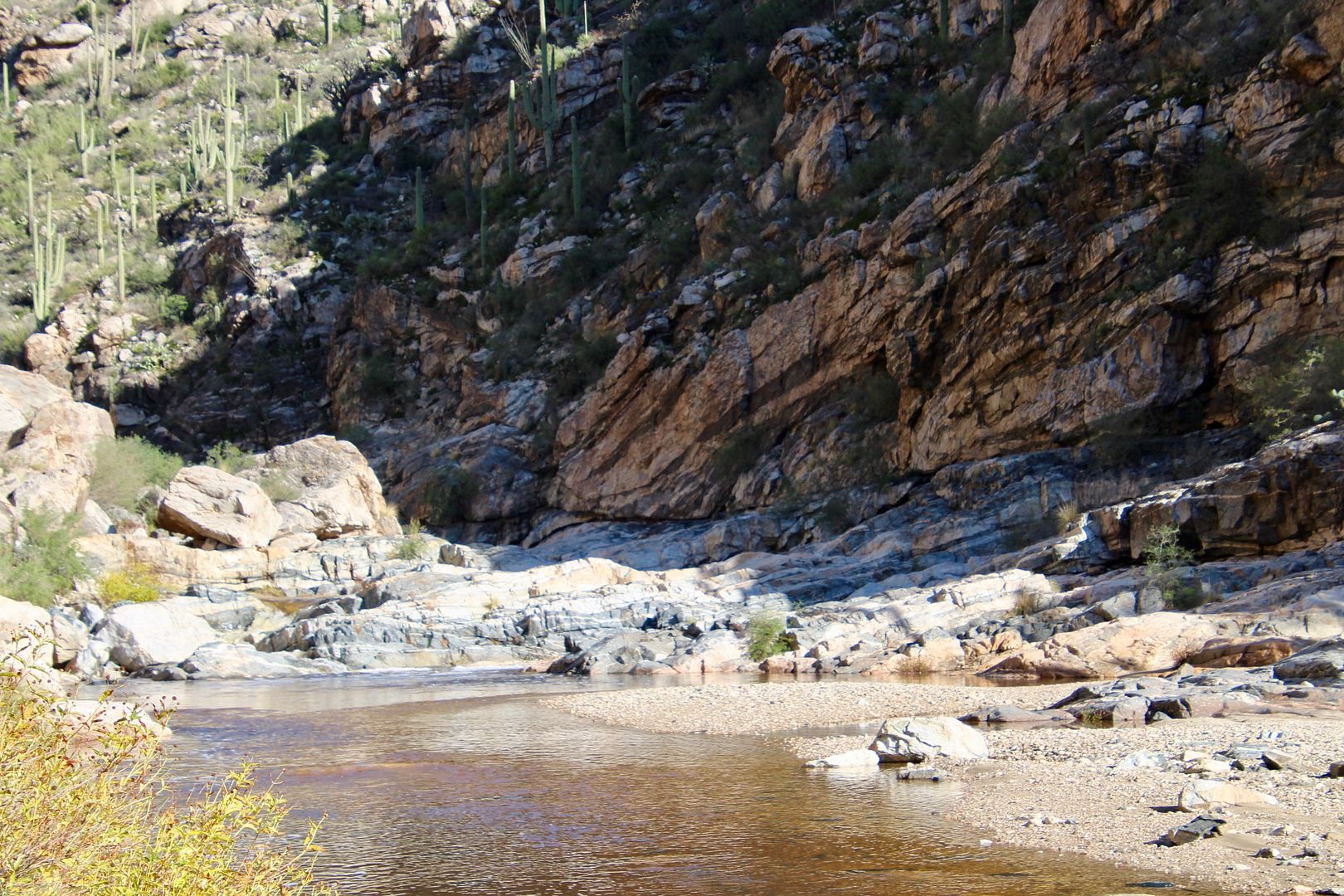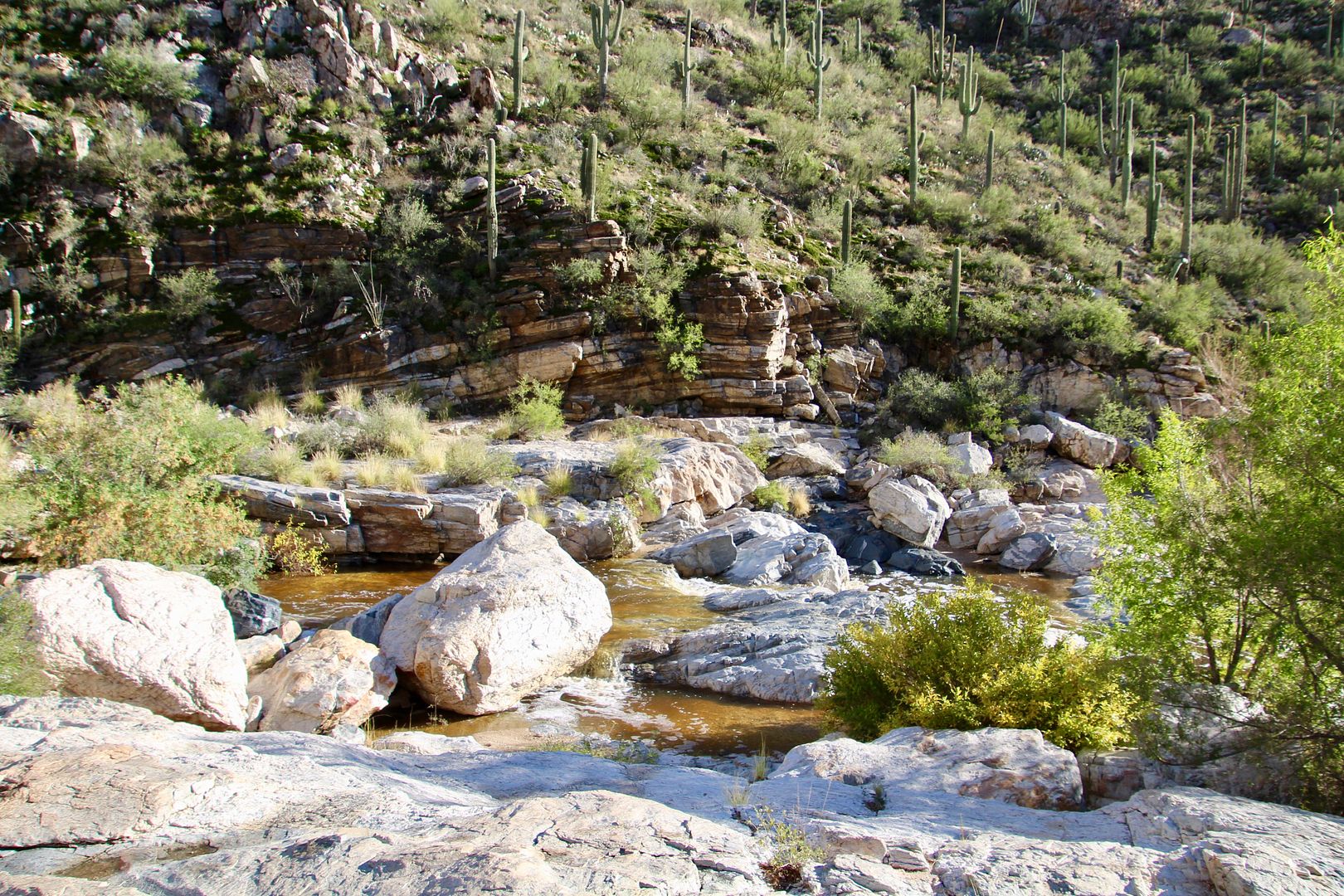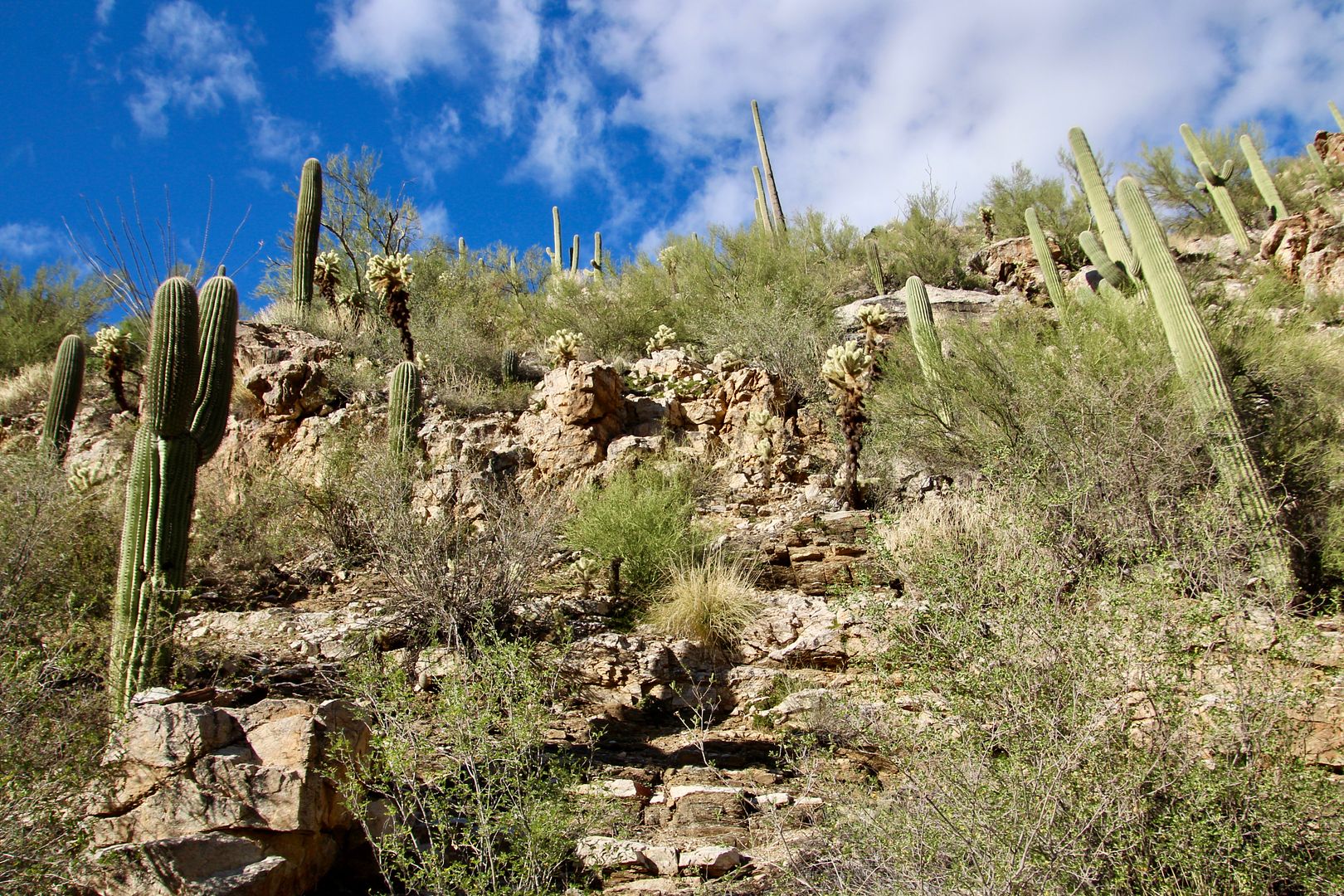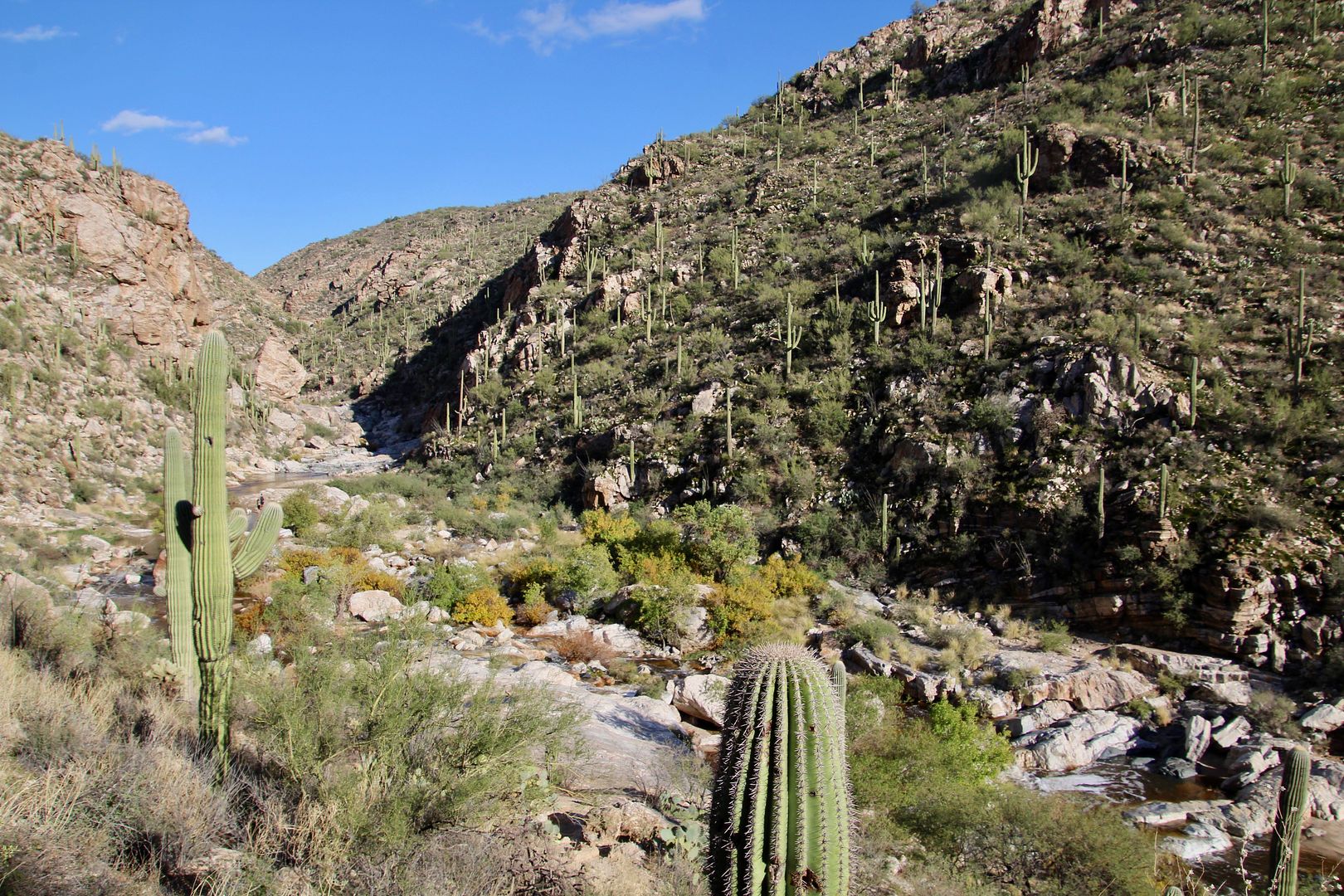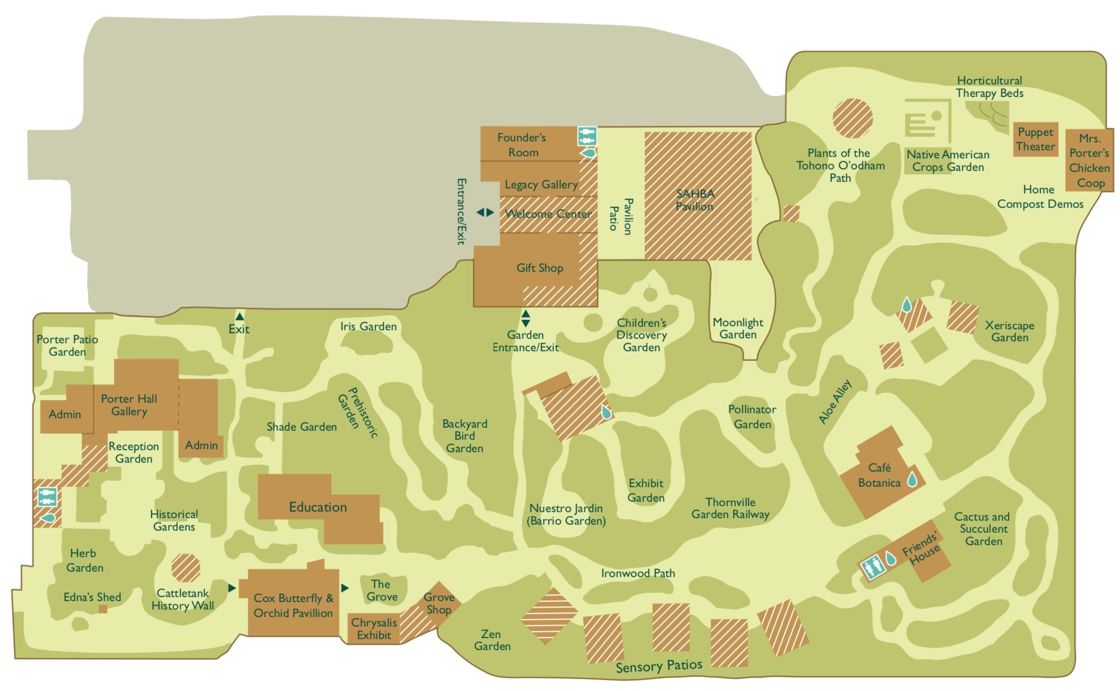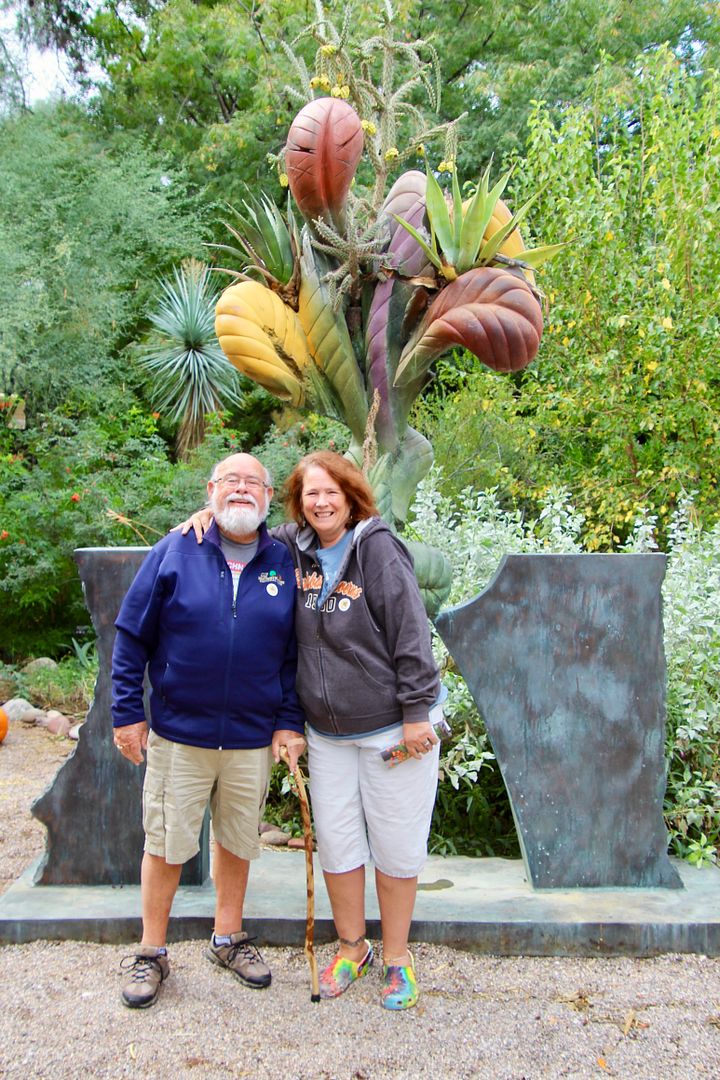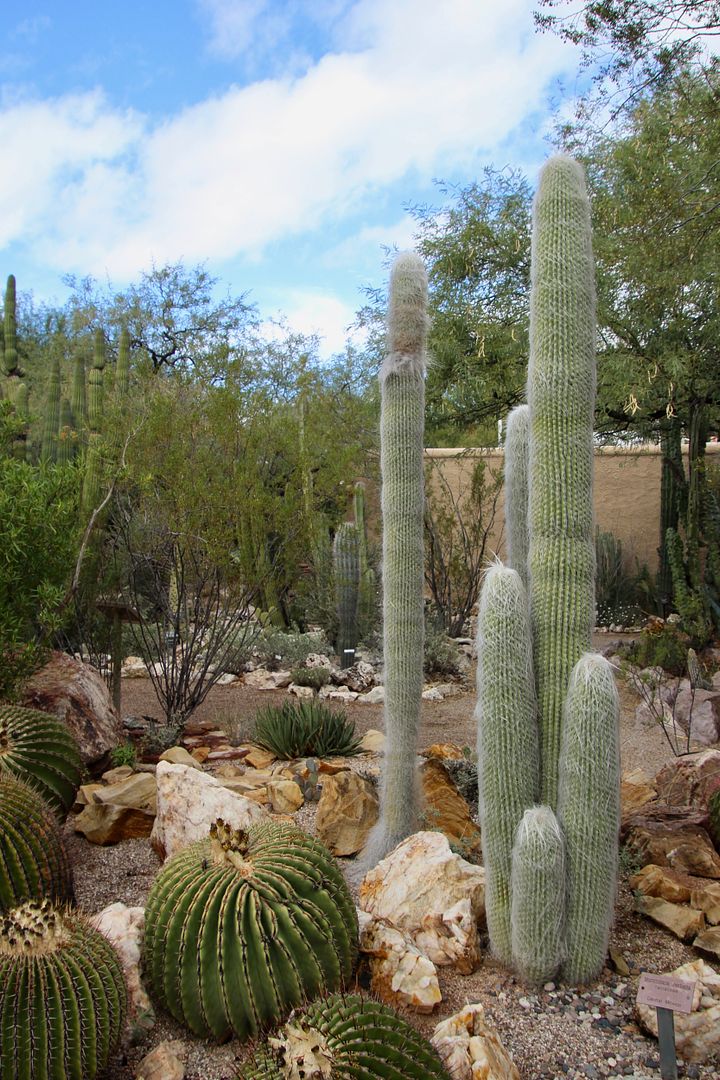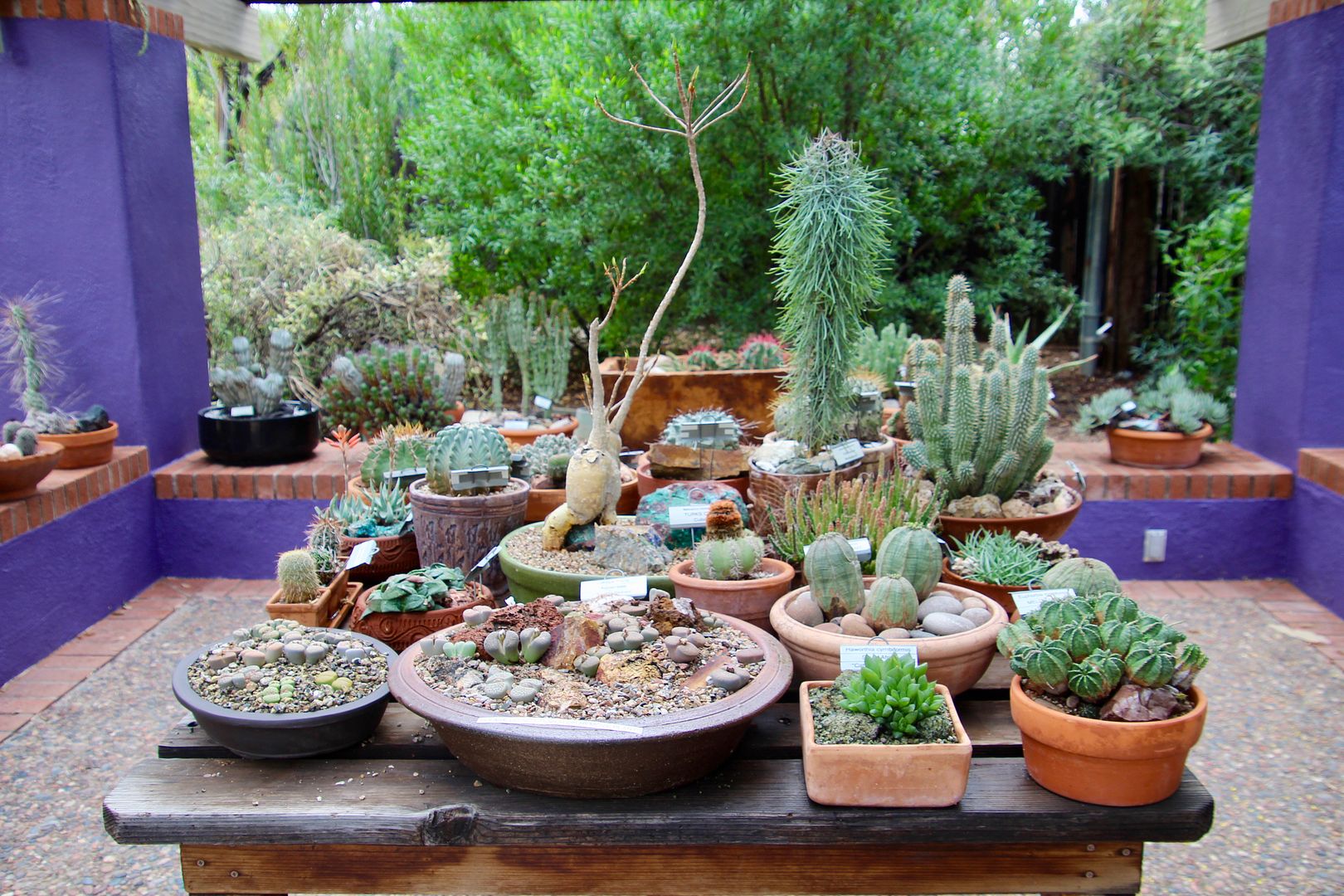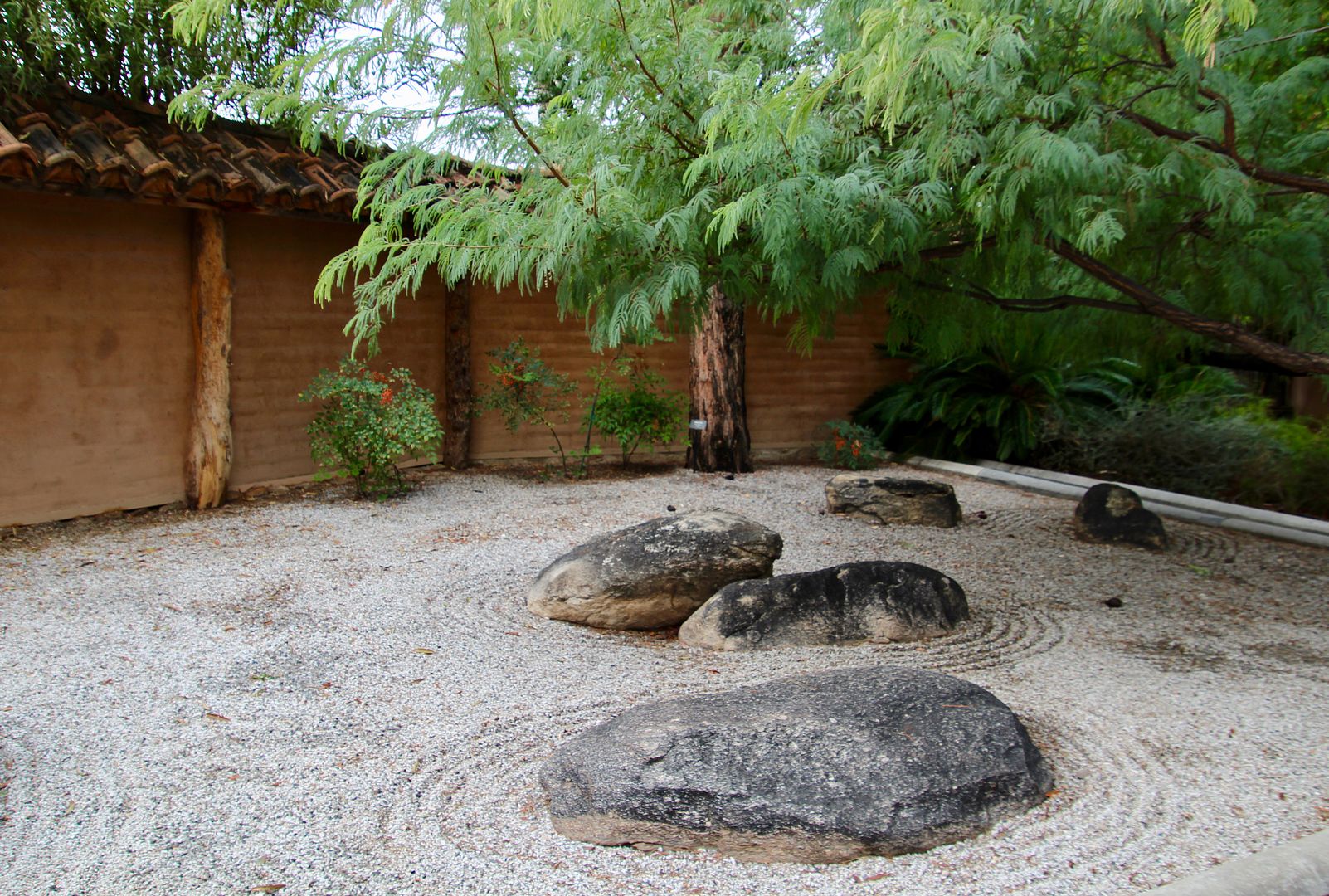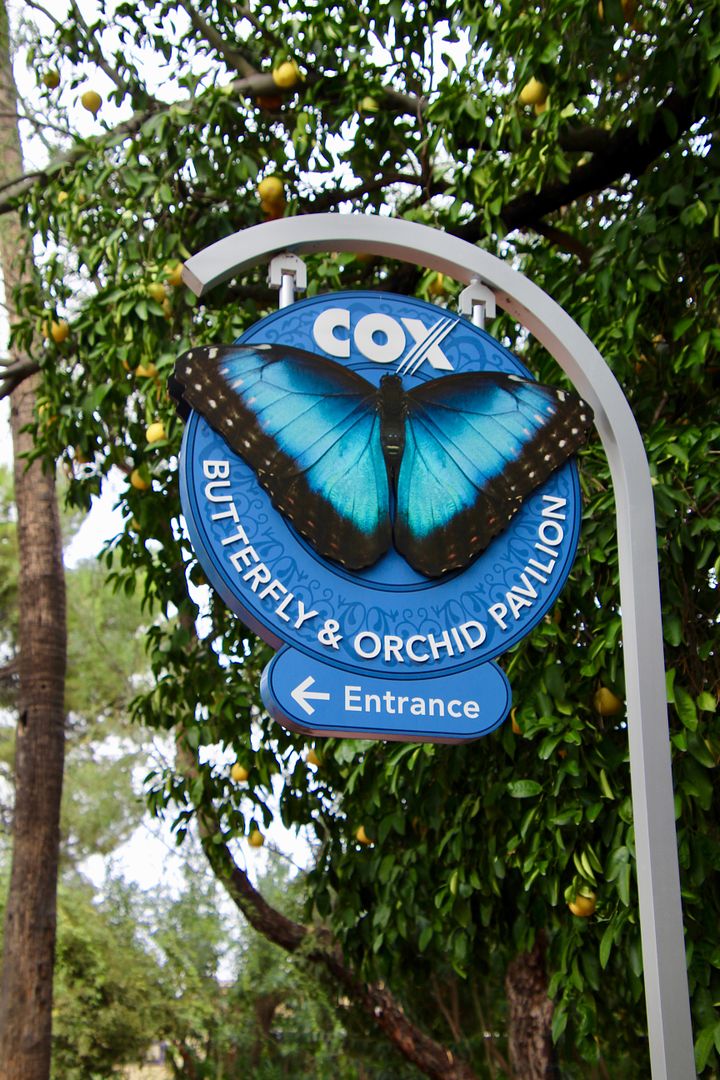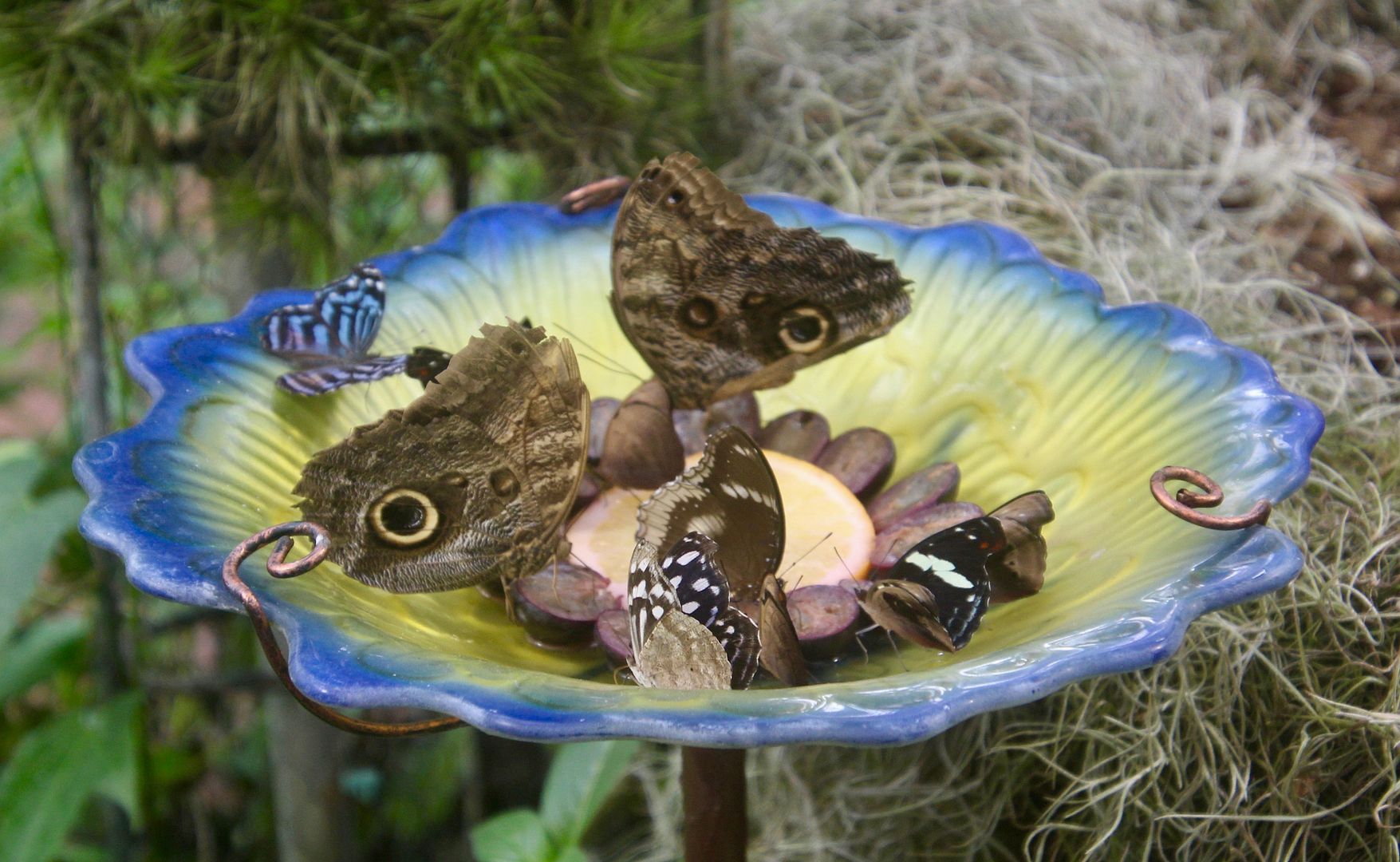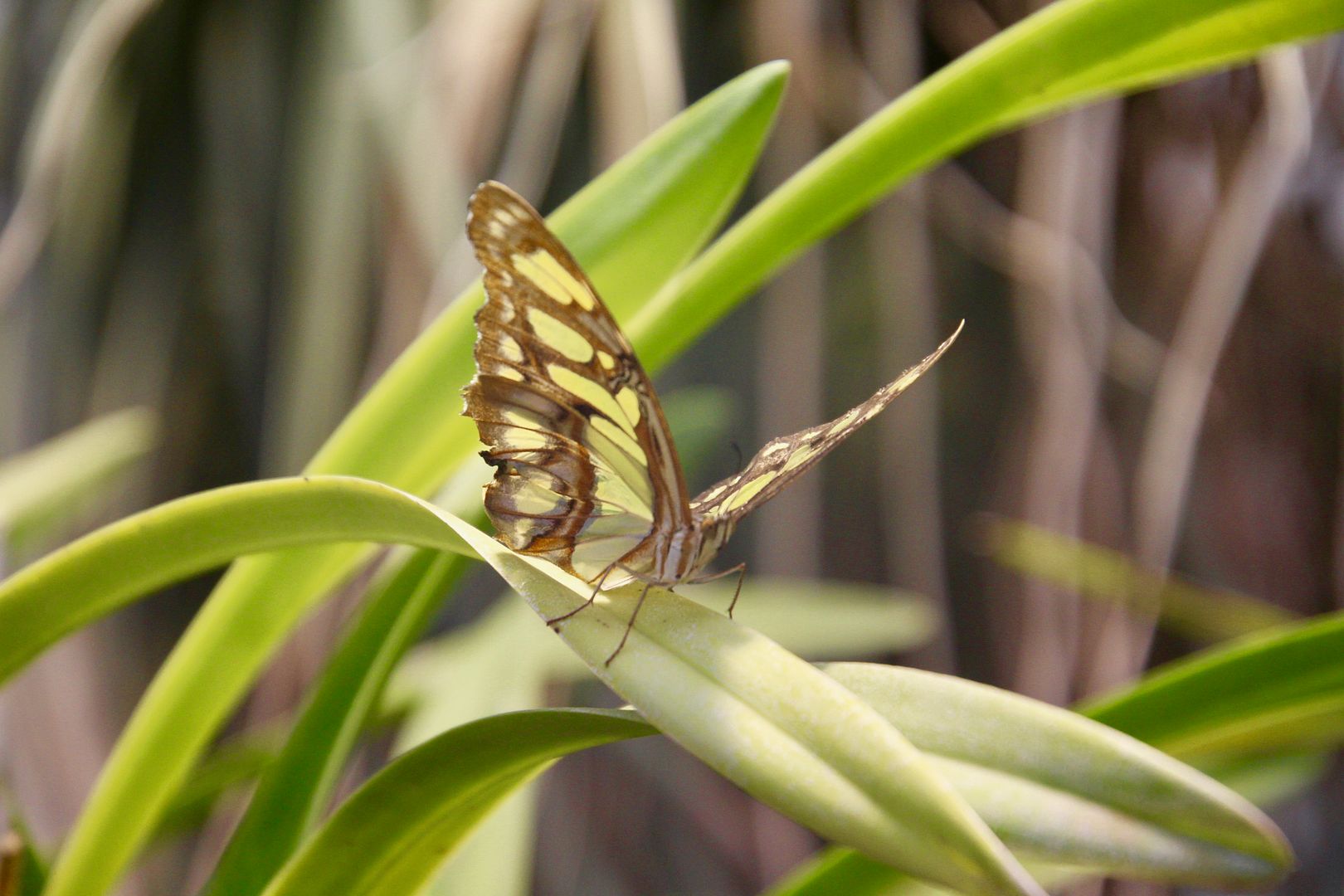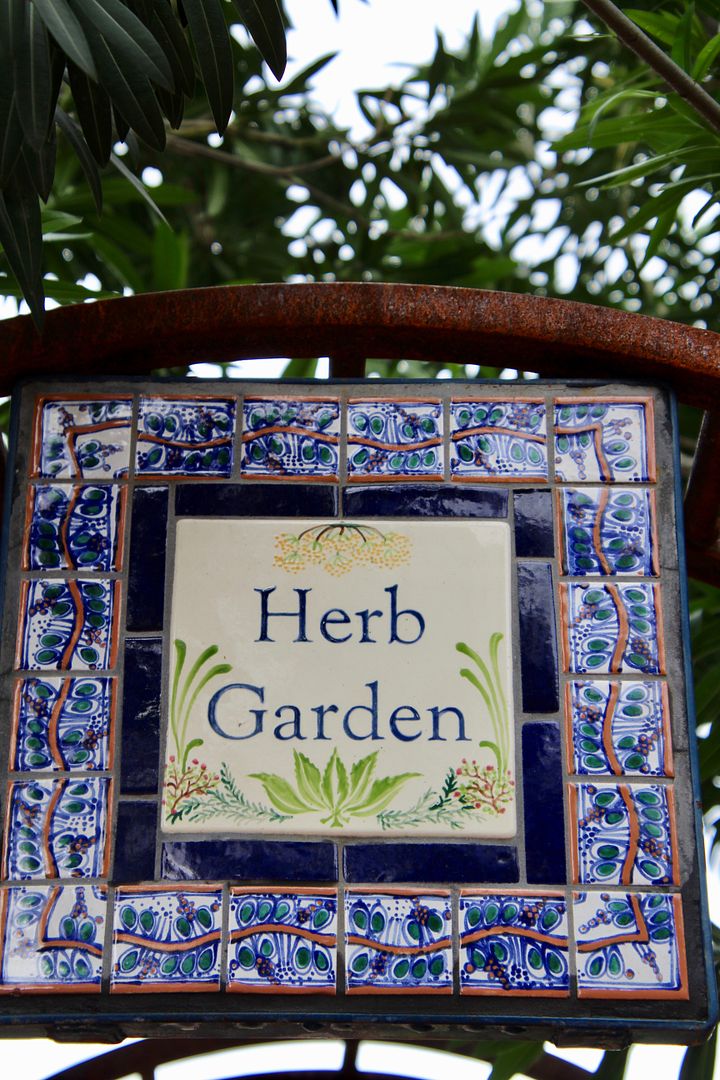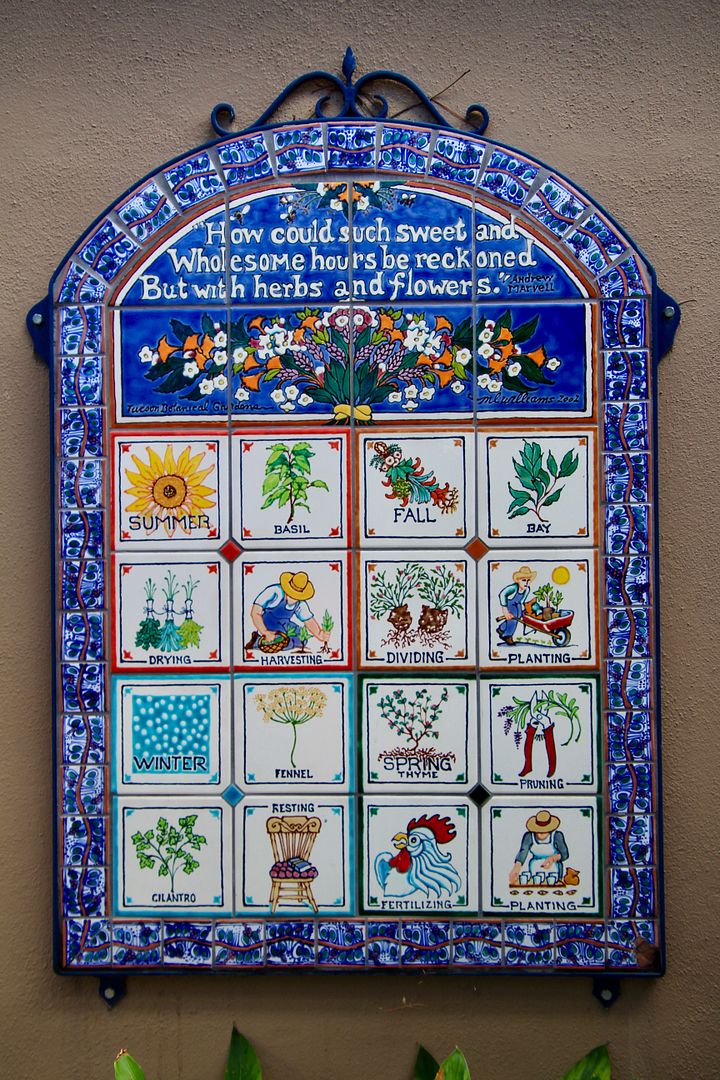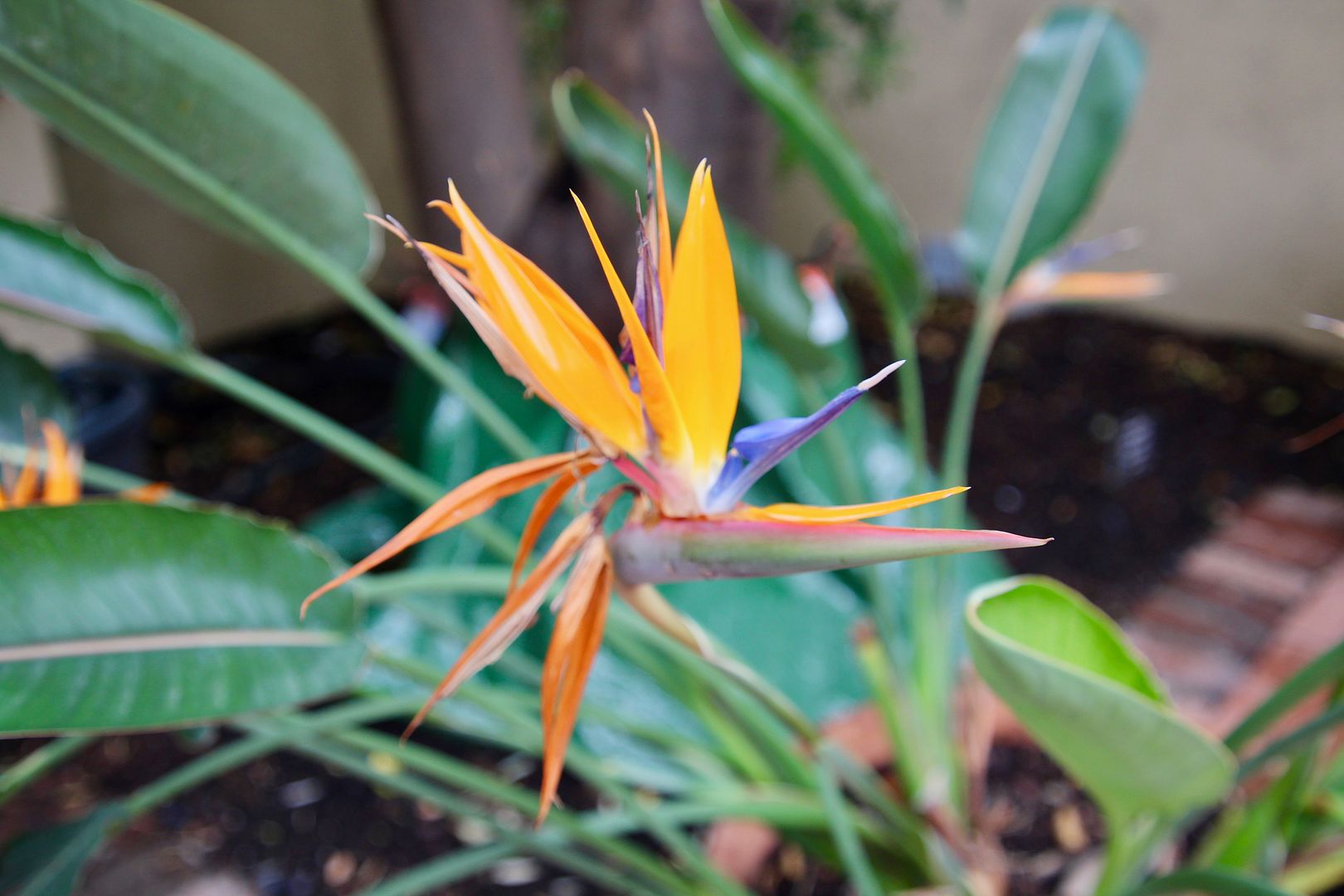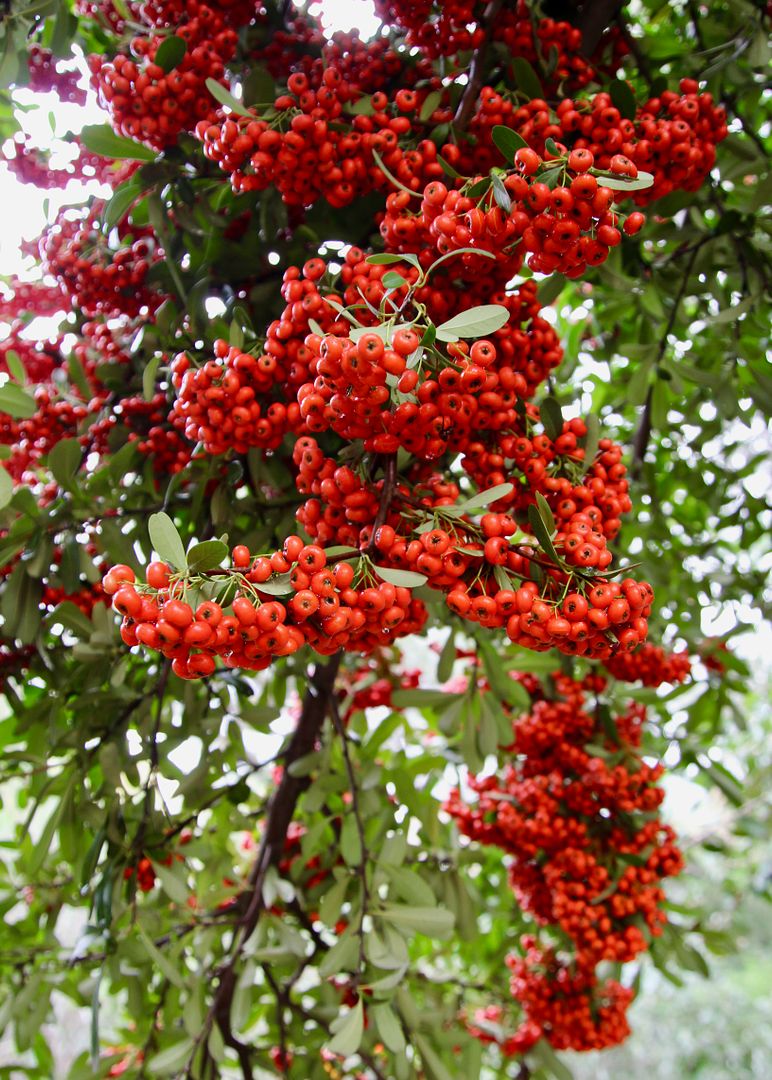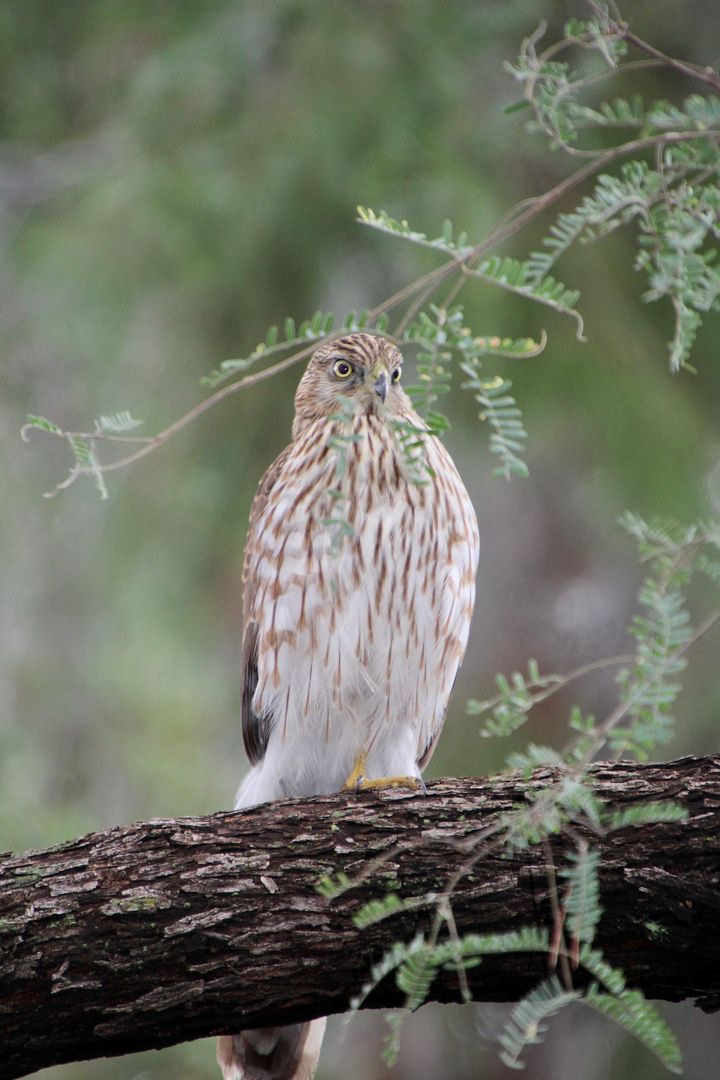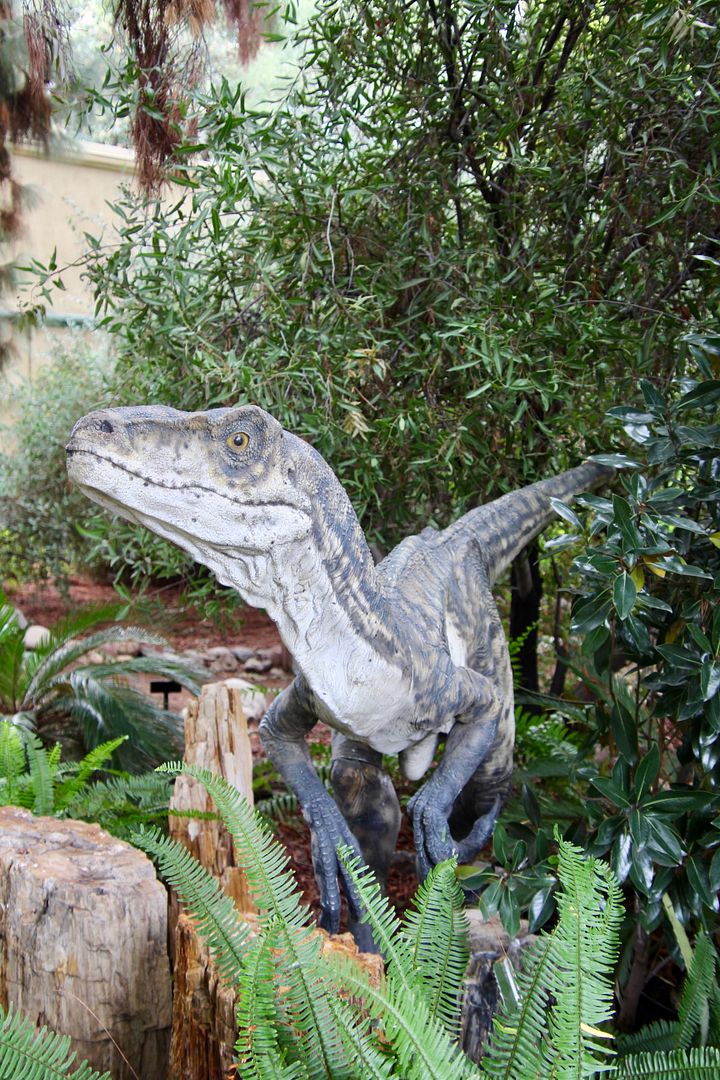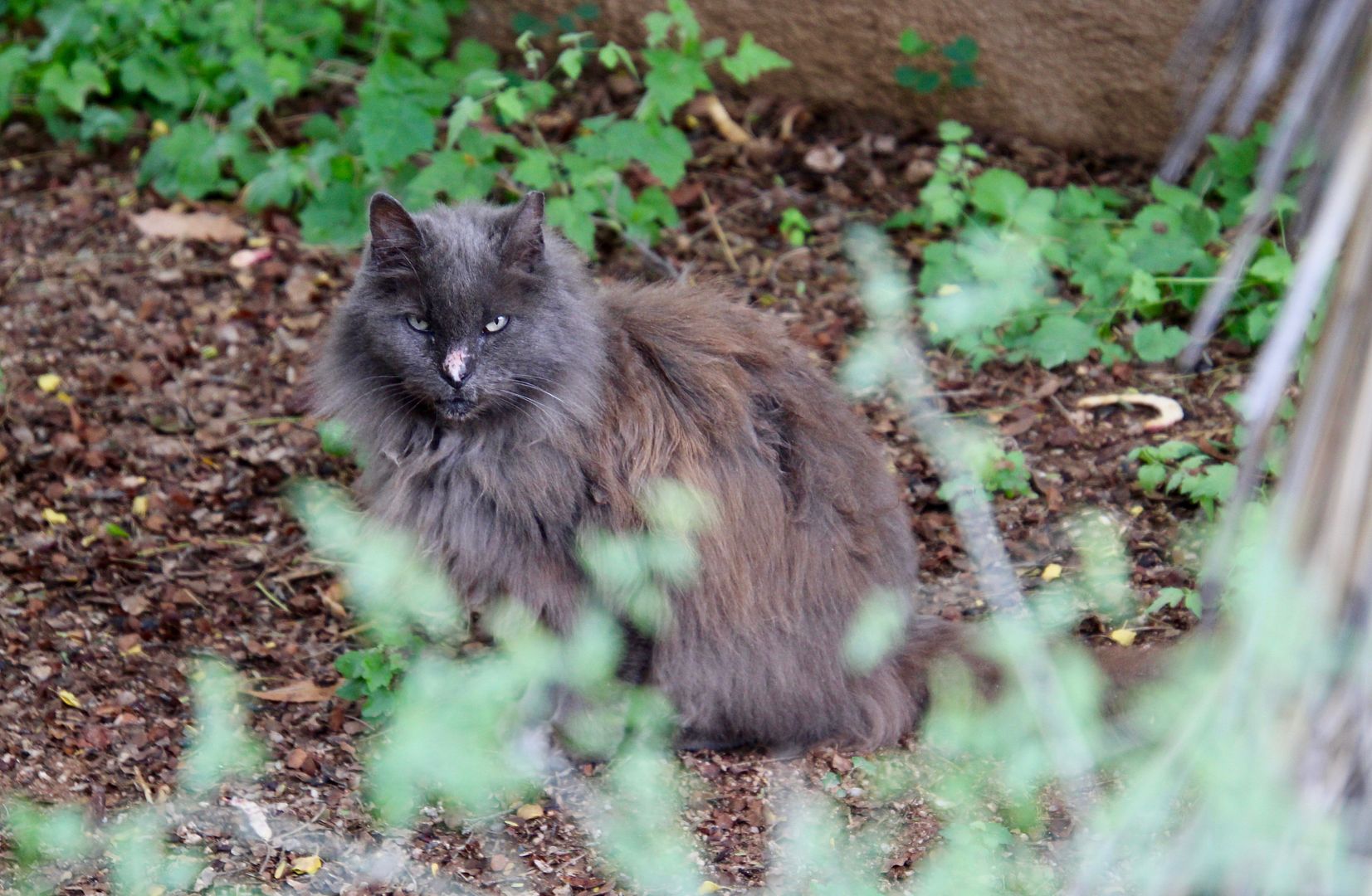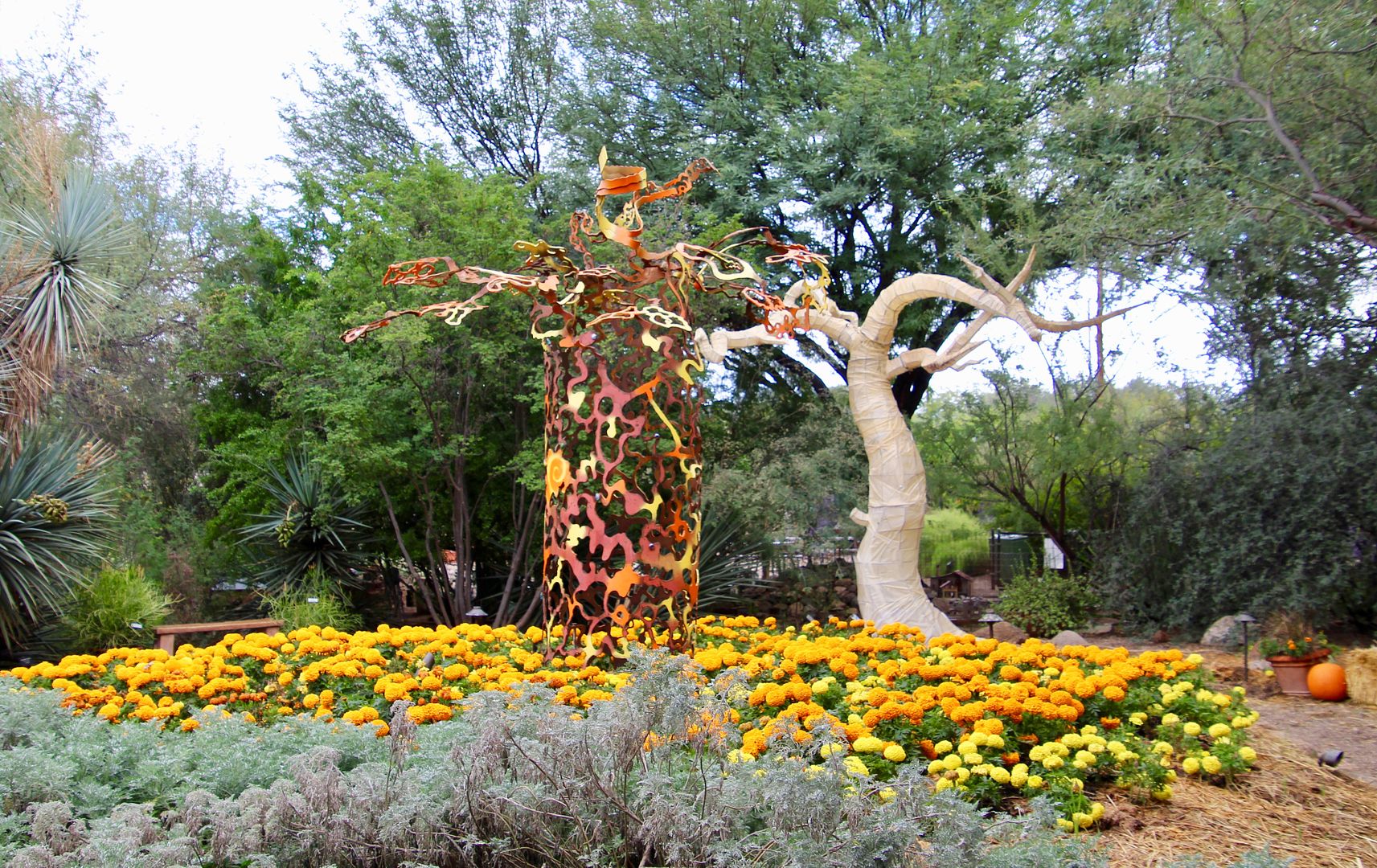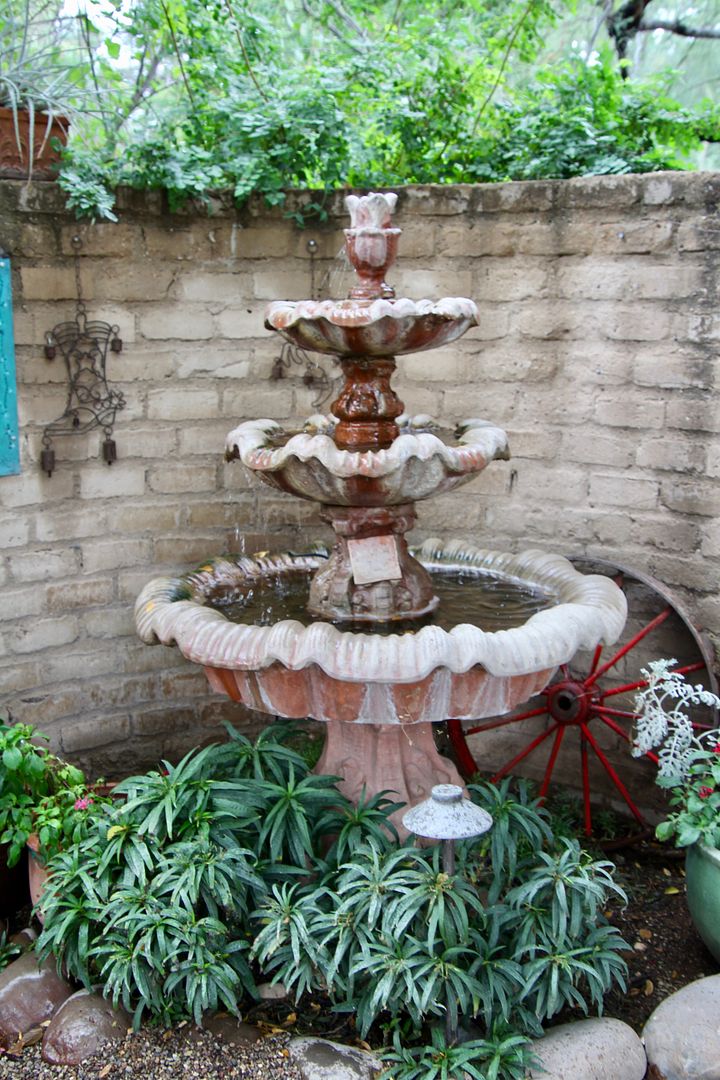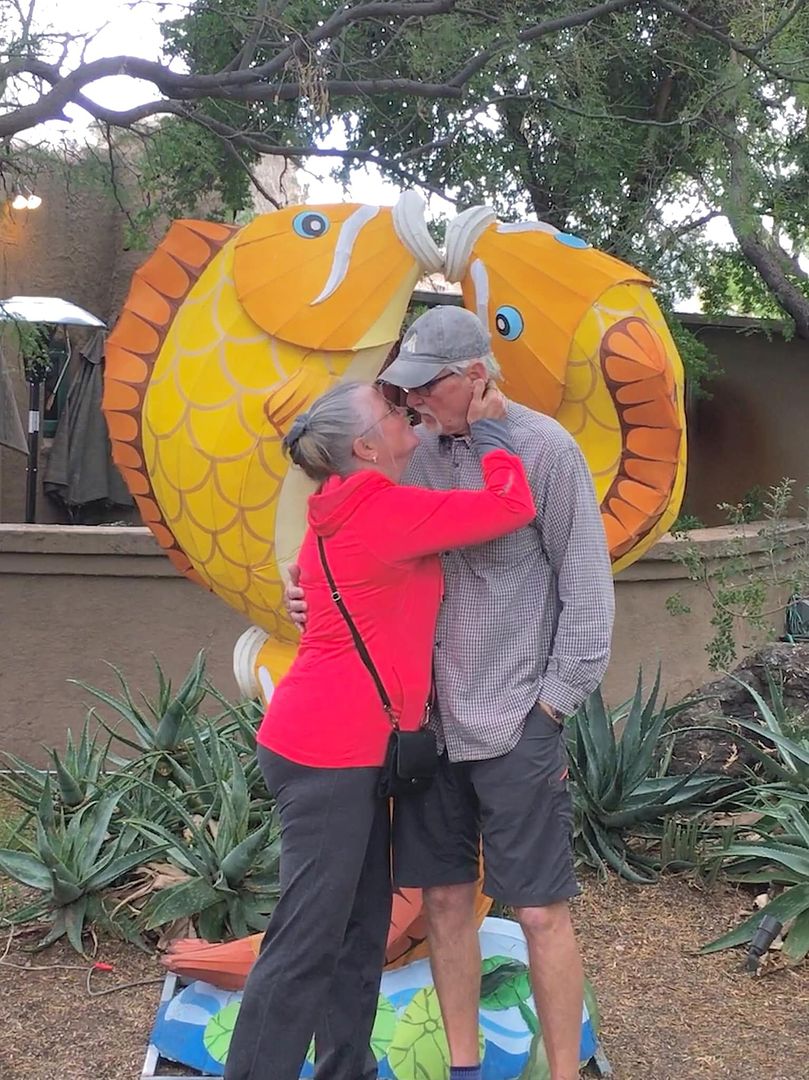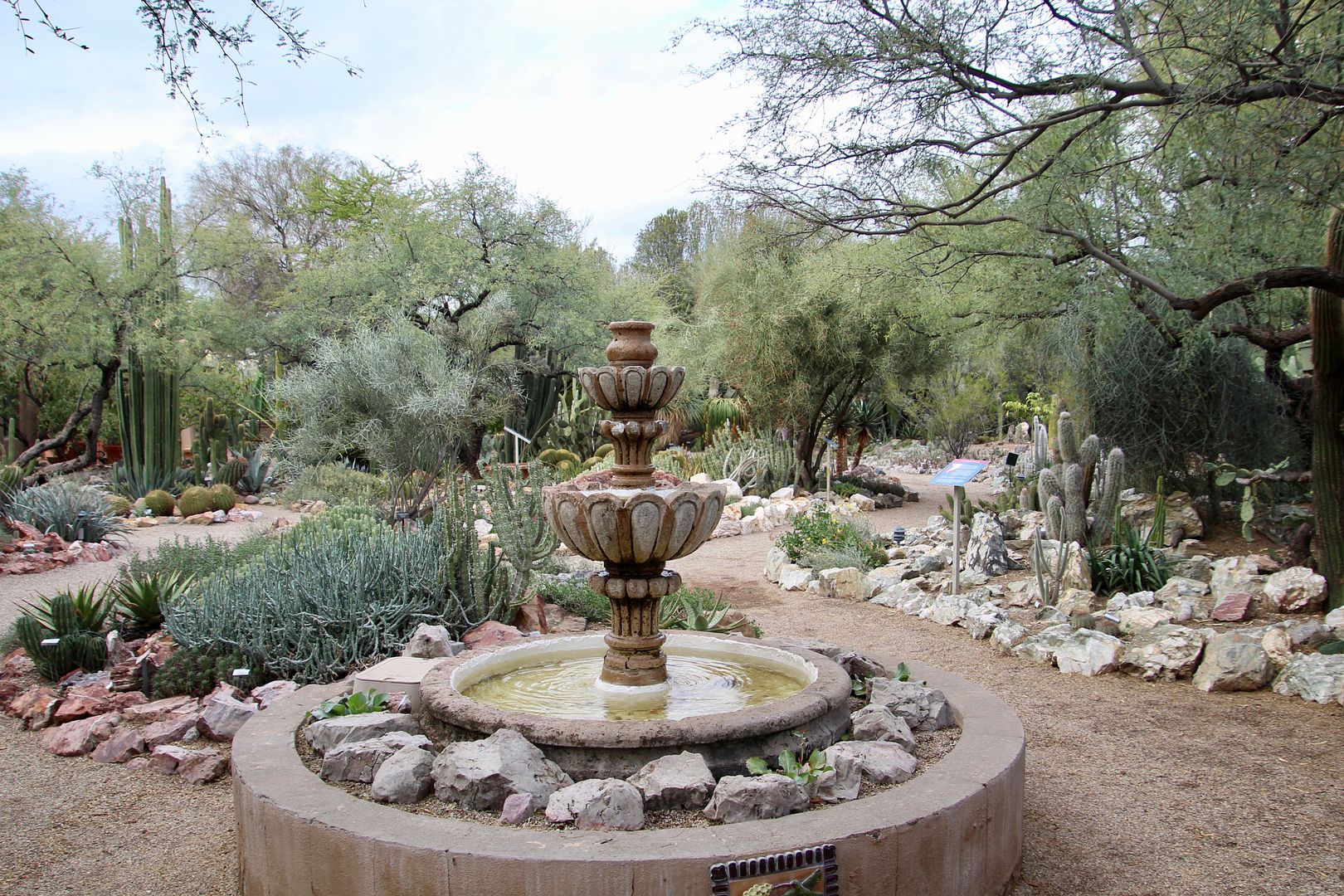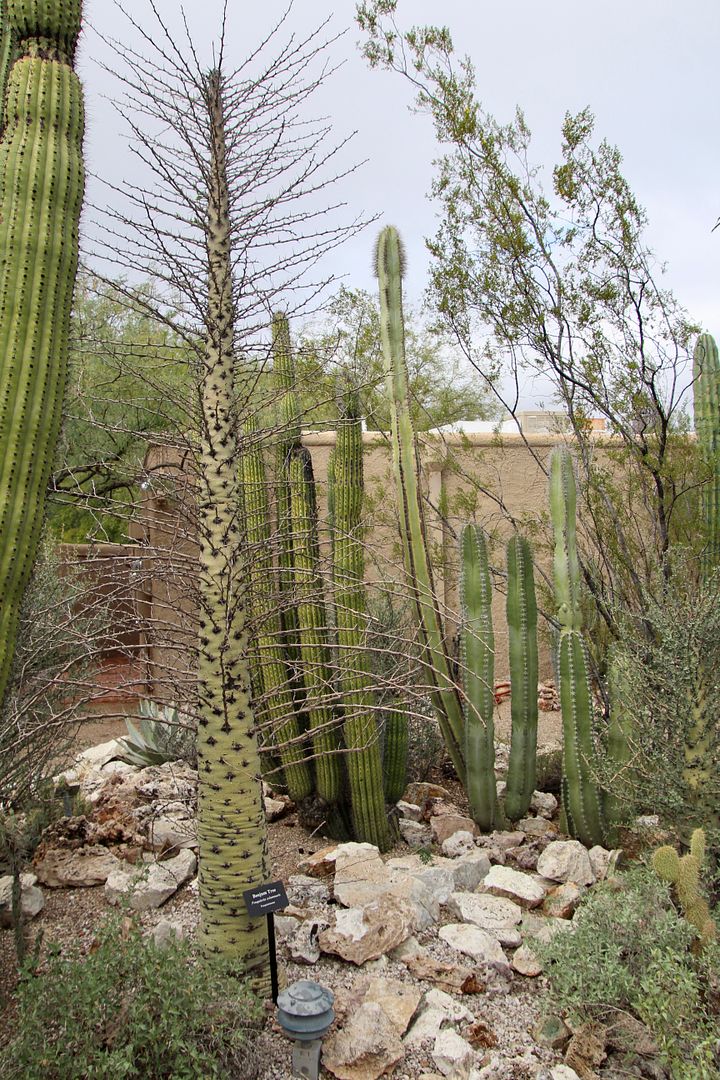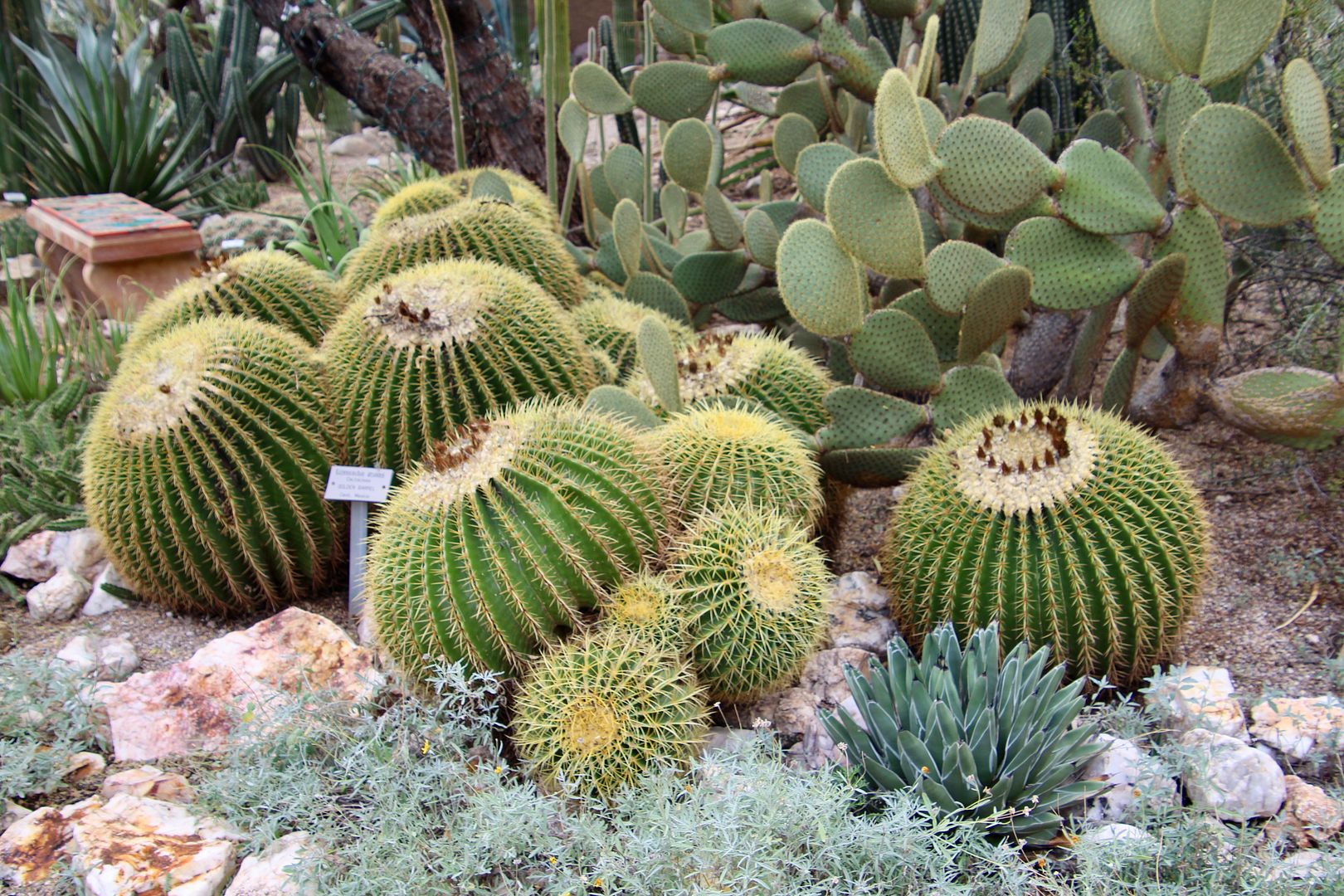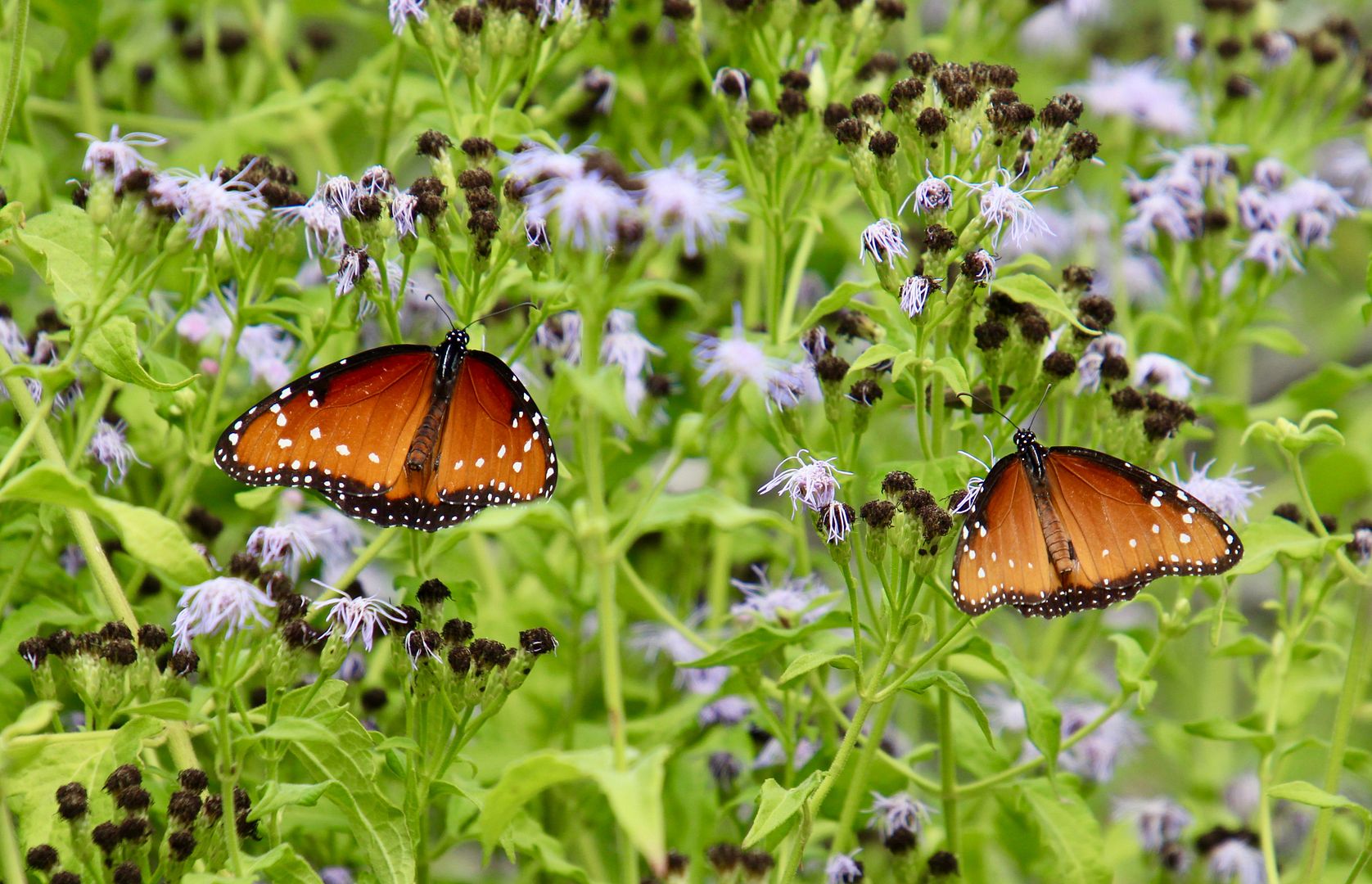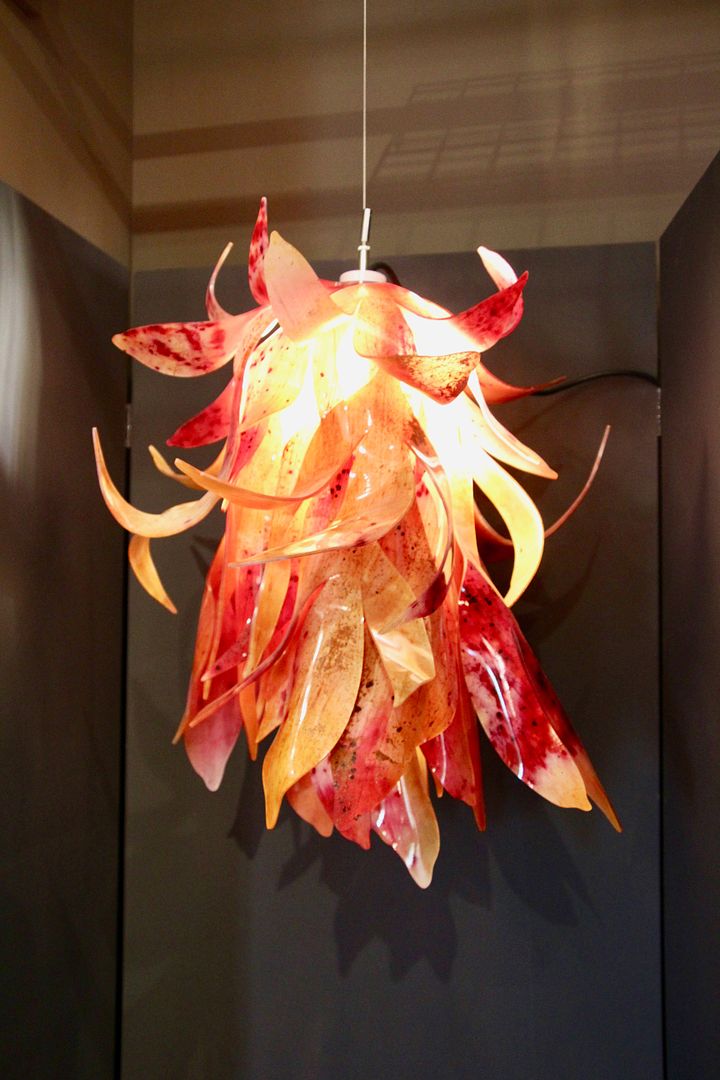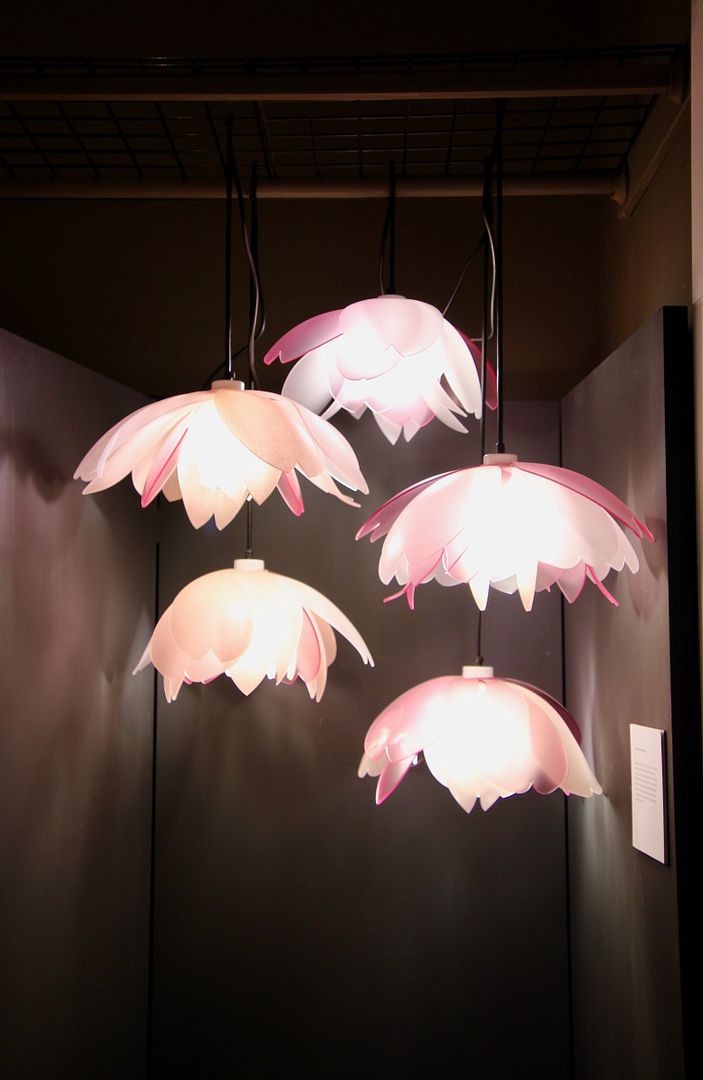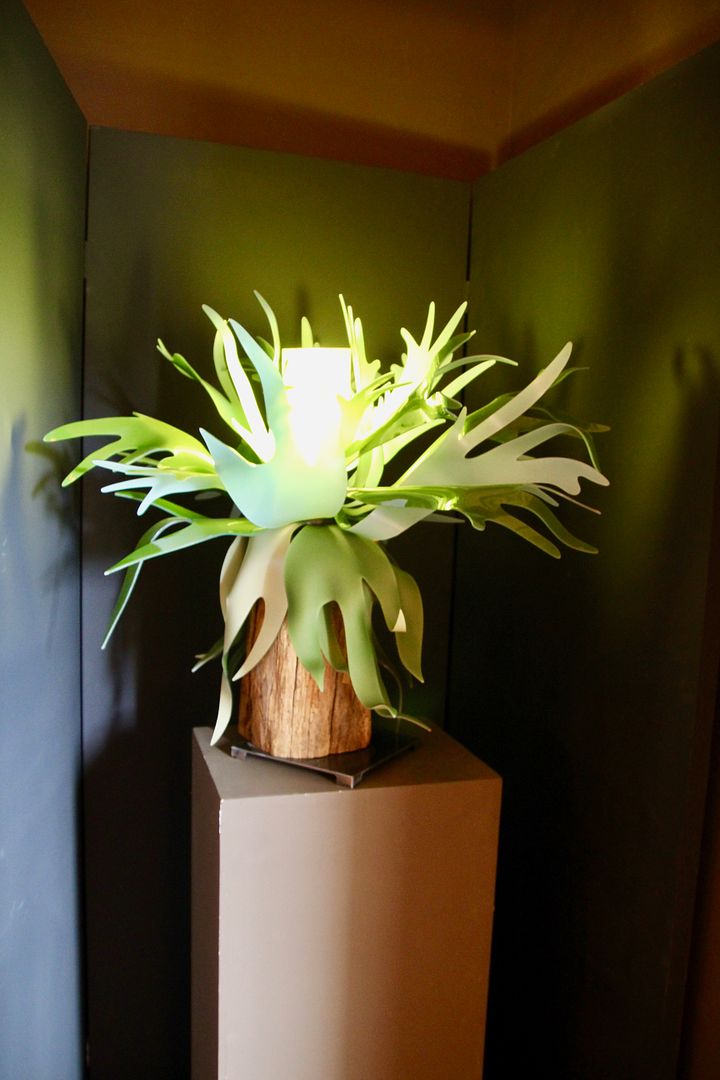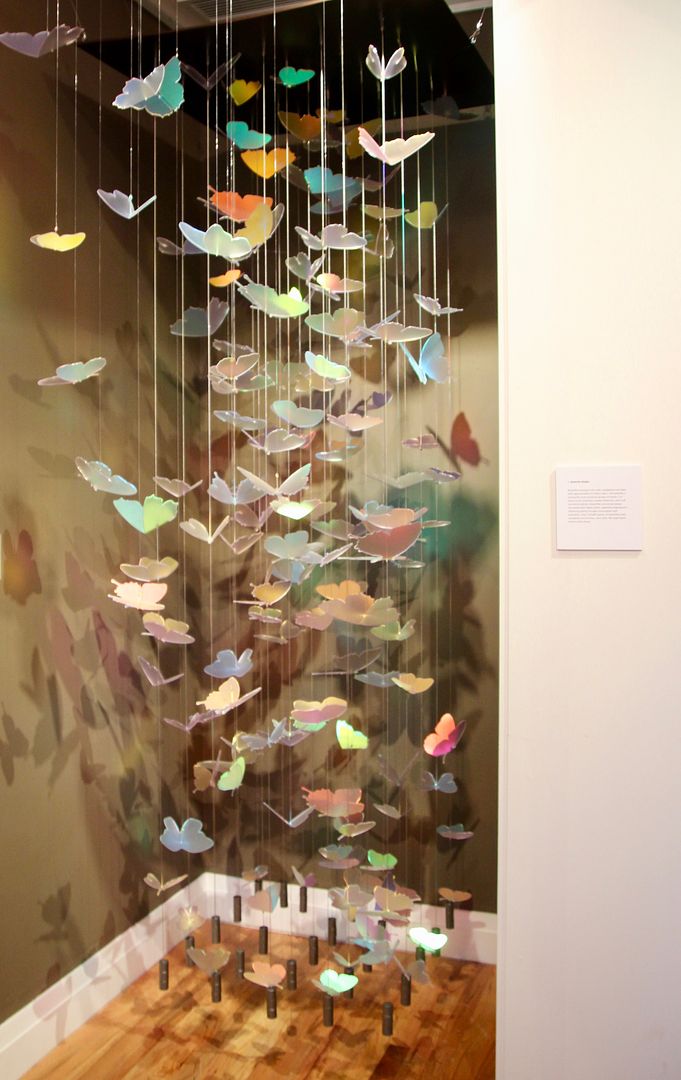About 10 miles south of Tucson is Mission San Xavier del Bac, an active parish and the oldest church in Arizona. Originally established in 1692 by Jesuit Father Kino, the mission is considered the finest example of Mexican Baroque architecture in the US. The mission is on 14 acres of land owned by the Catholic Diocese of Tucson on the Tohono O’odham reservation (native Americans of the Sonora Desert).
Earlier churches at this site were of simple design. The Jesuits were expelled from New Spain (Mexico) in 1767, but the Franciscans arrived the following year and began construction in 1783. Known as the “dove of the desert,” this church was designed by a Spanish architect and built by villagers (members of Tohono O’odham nation). Master artisans (from central Mexico) created much of the ornate interior. The foundations are 33” with a brick face inside and out. Fourteen years after construction began, money ran out. Note that the tower on the right was never completed.
The floor plan is a classic Latin cross with chapels at either end of the transept.
When we first arrived, there was a private ceremony in the mission. After it was over, tourists were once again allowed in the sanctuary. We learned it was a fiesta de quince años – a celebration of a girl’s fifteenth birthday. With cultural roots in Mesoamerica, it is widely celebrated today in the Americas. The guest of honor is a called a quinceañera. Here she is with her dad in front of the ornate altar.
In the chapel to the left of the main altar is a reclining statue representing St. Francis Xavier. Many pilgrims and tourist come here to pray; some reporting miracles related to their fervent faith. Ornate statuary can also be seen in the chapel (and throughout the church).
This is a view of the chapel on the opposite side. The statuary and mural paintings in the church are all authentic to eighteenth-century Spain. Also shown is the dome ceiling over the transept.
The mortuary chapel and graveyard are located to the west of the church. You can purchase a candle in the gift shop to place here. Note the bells atop the chapel.
The garden leading to the chapel had many succulents including this buckhorn cholla and subspecies of prickly pear cactus. I loved the delicate pink fruit!
Above the chapel we noticed this unusual rainbow in the sky directly above us. A friend told me it is called a circumzenithal arc and is similar to the halos we see around the moon or sun. It was formed by ice crystals in the upper atmosphere rather than rain drops or mist (of more common rainbows).
Below is a view of Grotto Hill (east of the mission) where a statue of the Virgin Mary can be found.
The following four flags have flown over the mission since it was established: Spain until 1821; Mexico until 1854 when the area was included in the Gadsden Purchase; the flag of the United States after 1854; and, the flag of the Tohono O’odham Nation since 1917 (when the reservation was established). More than $10M has been spent to maintain and restore the mission since 1978. Since the Patronato San Xavier was formed in 1978 (by concerned citizens), more than $10M has been spent to restore the mission. The group continues to raise funds for renovations and on-going maintenance.
A Franciscan pastor continues to provide spiritual leadership to the congregation. The mission school has been in operation since 1873. Today, it operates kindergarten through grade 8.
A shopping plaza is located on the south side of the property. We visited late in the day, however, and most shops were closed.
The mission is well worth a quick visit. There is no fee, although donations are greatly appreciated. The ornate interior and traditional Spanish statues and murals are pretty spectacular! Tours are available 9:30 am to 12:30 pm Monday through Saturday.
For additional information about San Xavier del Bac including schedule of services and details about the mission school, go to www.sanxaviermission.org.
